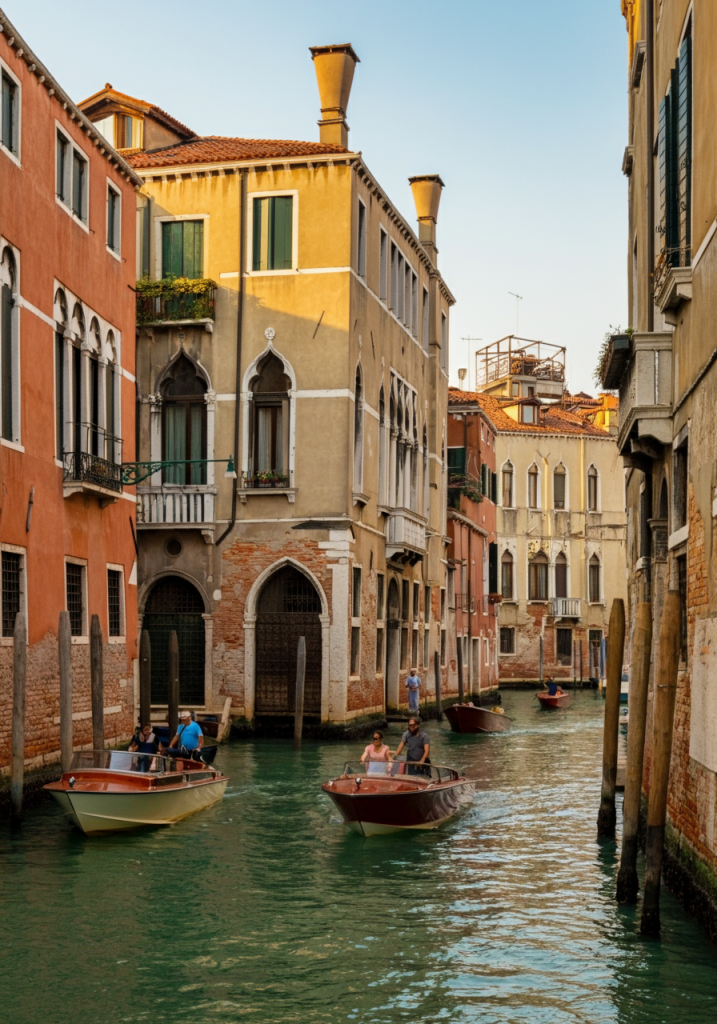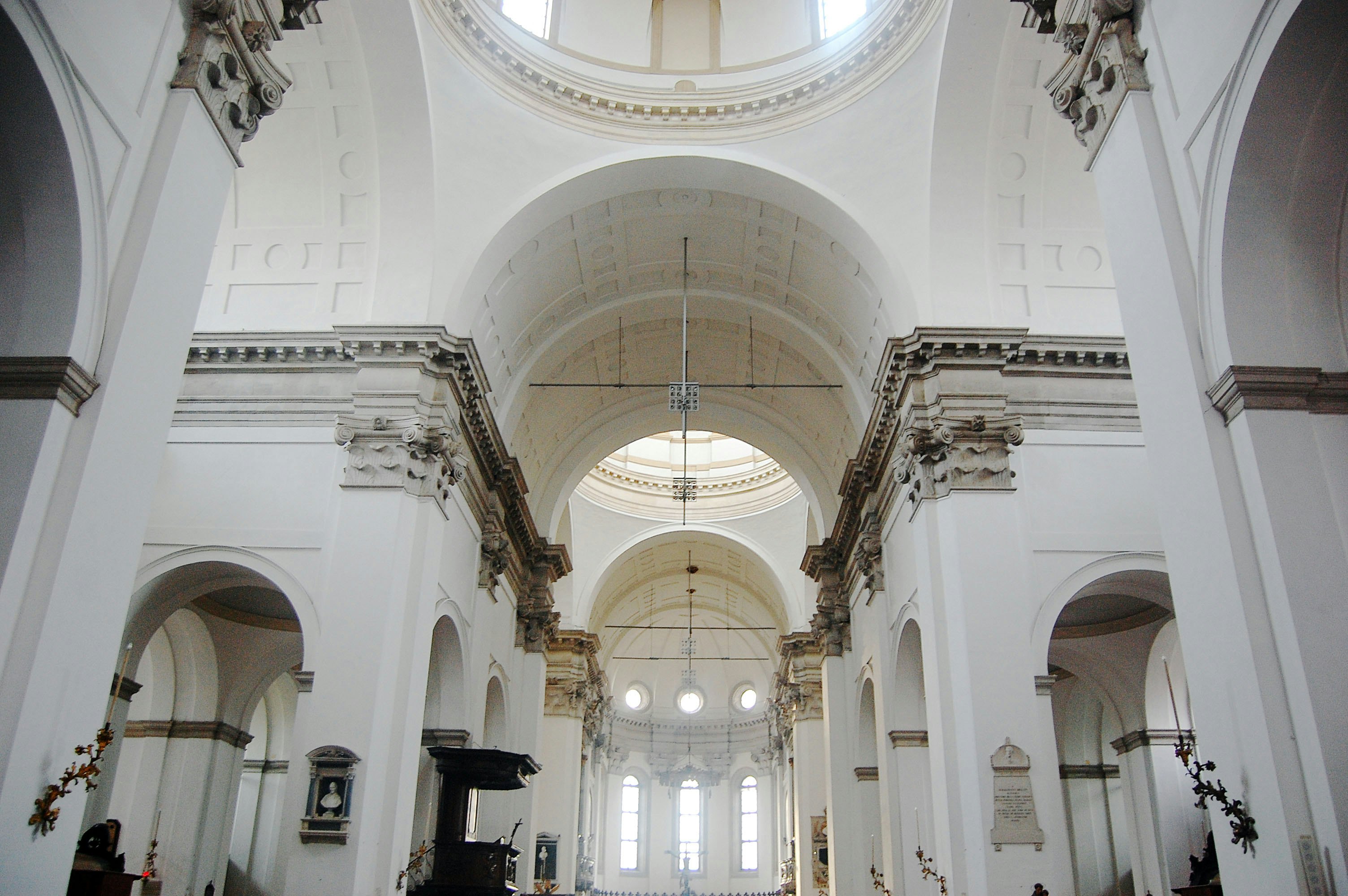
Your Special Travel in Italy.
Step into a world where history whispers from every corner and beauty unfolds at every turn. Italy weaves an enchanting tapestry of experiences that transform ordinary moments into lifelong memories – from the echo of your footsteps on centuries-old cobblestones to the aroma of traditional recipes wafting from family-run trattorias hidden in narrow alleyways.
Your journey might lead you to stand in awe before Michelangelo’s David, feeling your heart race as you absorb its perfect proportions, or find yourself gliding through Venice’s mysterious canals as the setting sun gilds ancient palazzos. Perhaps you’ll discover your own secret corner of Tuscany, where hilltop villages emerge from morning mist and local vintners share stories as rich as their wines.
In Italy, every path leads to wonder – whether you’re tasting olive oil pressed from a generations-old grove, learning to make pasta from a nonna’s cherished recipe, or simply watching the world go by in a sun-drenched piazza. Here, travel transforms into poetry, where each day writes a new verse in your personal story of la dolce vita.
As you immerse yourself in the timeless allure of Italy, you’ll find yourself captivated by the country’s seamless blend of the past and present. From the majestic ruins of ancient Rome to the cutting-edge design of modern architecture, Italy’s cultural tapestry is woven with threads of enduring tradition and innovative brilliance.
Whether you’re seeking to uncover the secrets of the Mona Lisa, explore the grandeur of Milan’s iconic Duomo, or simply savor the simple pleasures of an afternoon spent in a sun-dappled piazza, your journey through Italy will leave an indelible mark on your heart and soul. Prepare to be swept away by the magic and wonder that make this extraordinary country a true destination of a lifetime.
The Extraordinary Journey of Italian Architecture and Culture
Few nations can rival the architectural legacy of Italy, spanning over two millennia and encompassing some of humanity’s most extraordinary achievements in design and engineering. This captivating story begins with the ingenious Romans, who revolutionized construction through innovations like the arch and concrete, creating enduring masterpieces such as the massive Colosseum amphitheater and the perfect dome of the Pantheon – the latter remaining the world’s largest unreinforced concrete dome.
The Middle Ages gave way to the blossoming of the Renaissance, where visionaries transformed Italy’s urban landscape with unprecedented creativity. Filippo Brunelleschi’s revolutionary dome for the Florence Cathedral solved engineering challenges that had puzzled architects for centuries, while Michelangelo’s design for St. Peter’s Basilica redefined sacred architecture. These masters not only built structures, but created mathematical and artistic principles that would influence architecture for ages to come.
As the Renaissance evolved into the Baroque period, Italian architects embraced drama and emotion in their designs. The theatrical facades of Rome’s churches, like Borromini’s San Carlo alle Quattro Fontane, played with light and shadow to create dynamic spiritual experiences. This artistic exuberance later gave way to the ordered symmetry of Neoclassicism, visible in masterpieces like the Palazzo Madama in Turin, before the radical Futurists of the early 20th century challenged traditional forms with bold, dynamic visions of modernity.
Italy’s architecture today continues this legacy of innovation while honoring its rich heritage. From the avant-garde achievements of Renzo Piano, like the Parco della Musica in Rome, to Massimiliano Fuksas’ cloud-like convention centers, contemporary Italian architects demonstrate that the nation’s architectural genius remains more vibrant than ever. Whether you stand before the Gothic Milan Duomo, the Byzantine St. Mark’s Basilica in Venice, or the ancient Pantheon in Rome, you experience not just buildings, but the physical embodiment of Italy’s remarkable cultural journey through time.
<head>
<script async src="https://pagead2.googlesyndication.com/pagead/js/adsbygoogle.js?client=ca-pub-9464364489511962"
crossorigin="anonymous"></script>
</head> 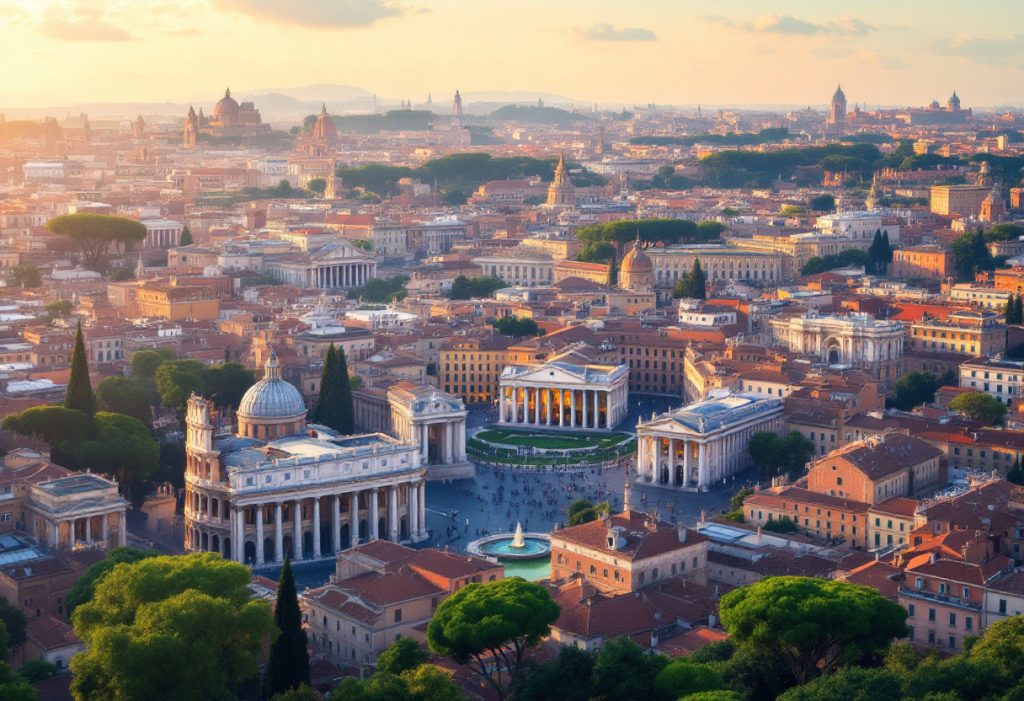
Ancient Roman Grandeur
Engineering Marvels
The Romans revolutionized architecture, creating unparalleled engineering wonders that still astound us today. The Colosseum, with its intricate system of arches and remarkable acoustics, could seat over 50,000 spectators, demonstrating their superb understanding of scale and functionality. The Pantheon, crowned by the world’s largest unreinforced concrete dome at 43.3 meters in diameter, remains a testament to their innovative use of concrete. The Romans also perfected the arch and vault system, enabling them to create vast interior spaces and support immense structural loads, setting standards that architects have followed for millennia.
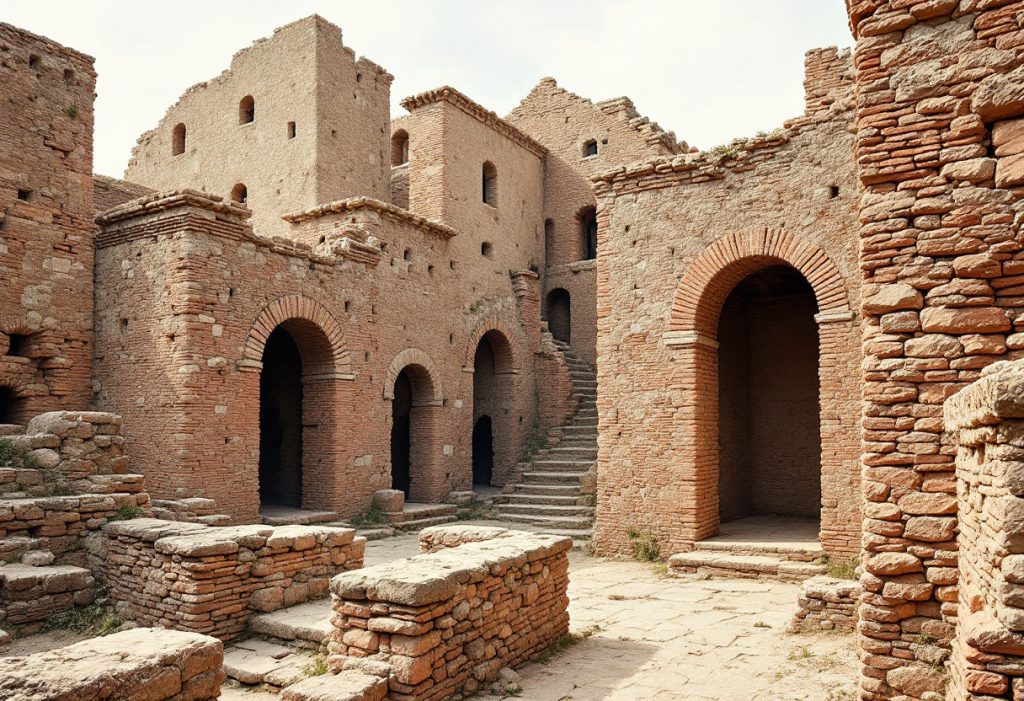
Influence on Western Architecture
The influence of Roman architecture can be seen in countless buildings throughout the world. From the Roman Forum to the Baths of Caracalla, the Roman Empire left an indelible mark on architectural history.
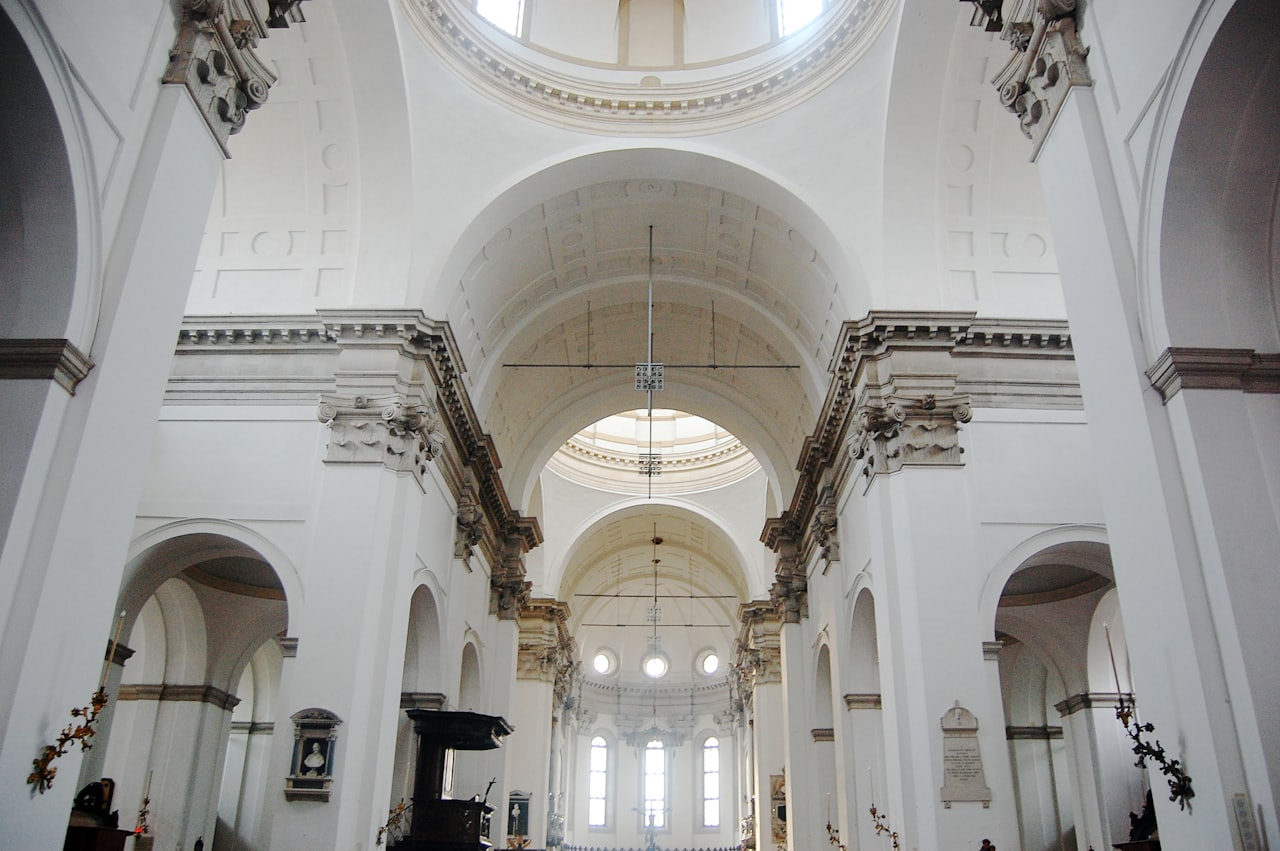
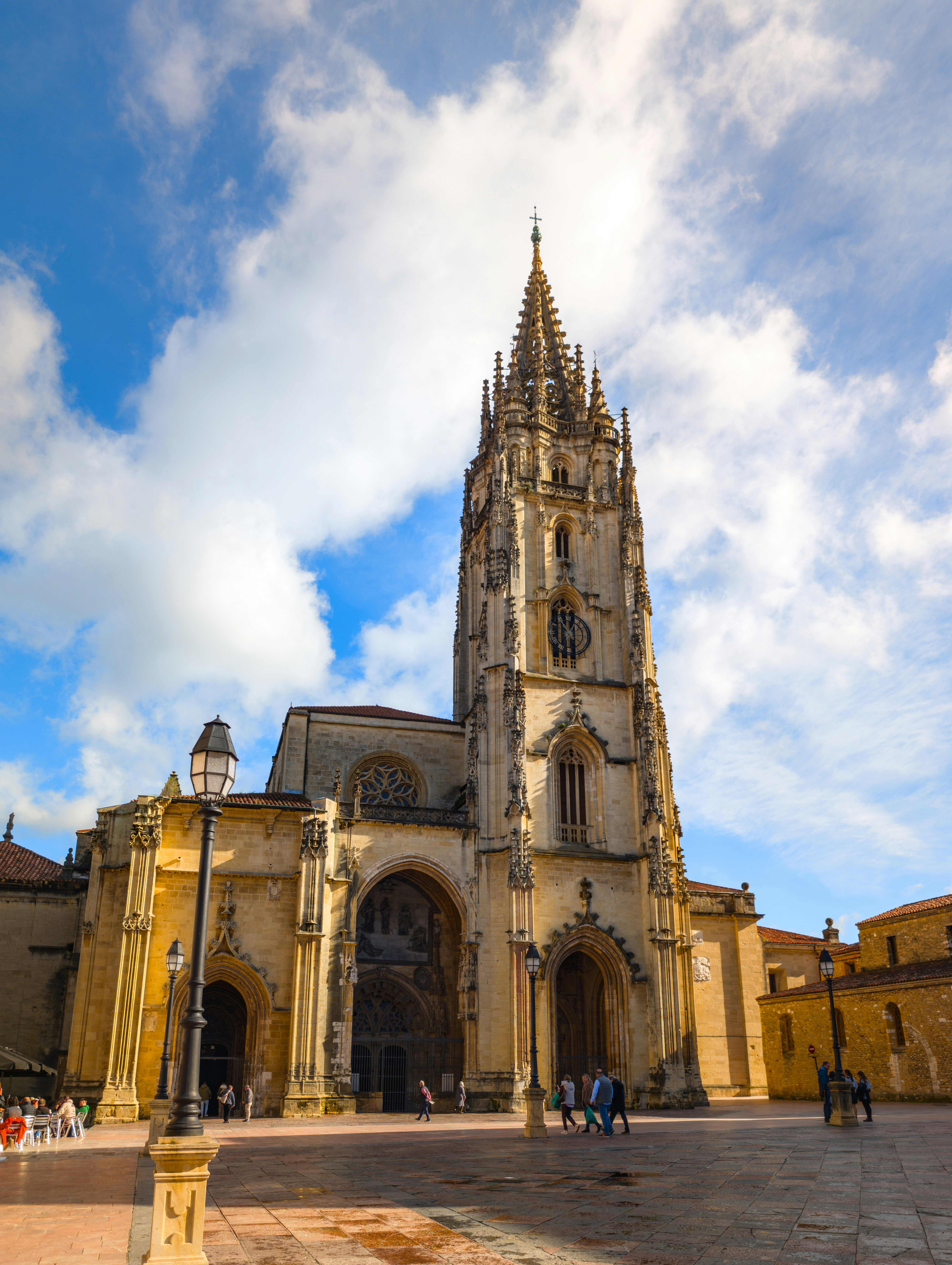
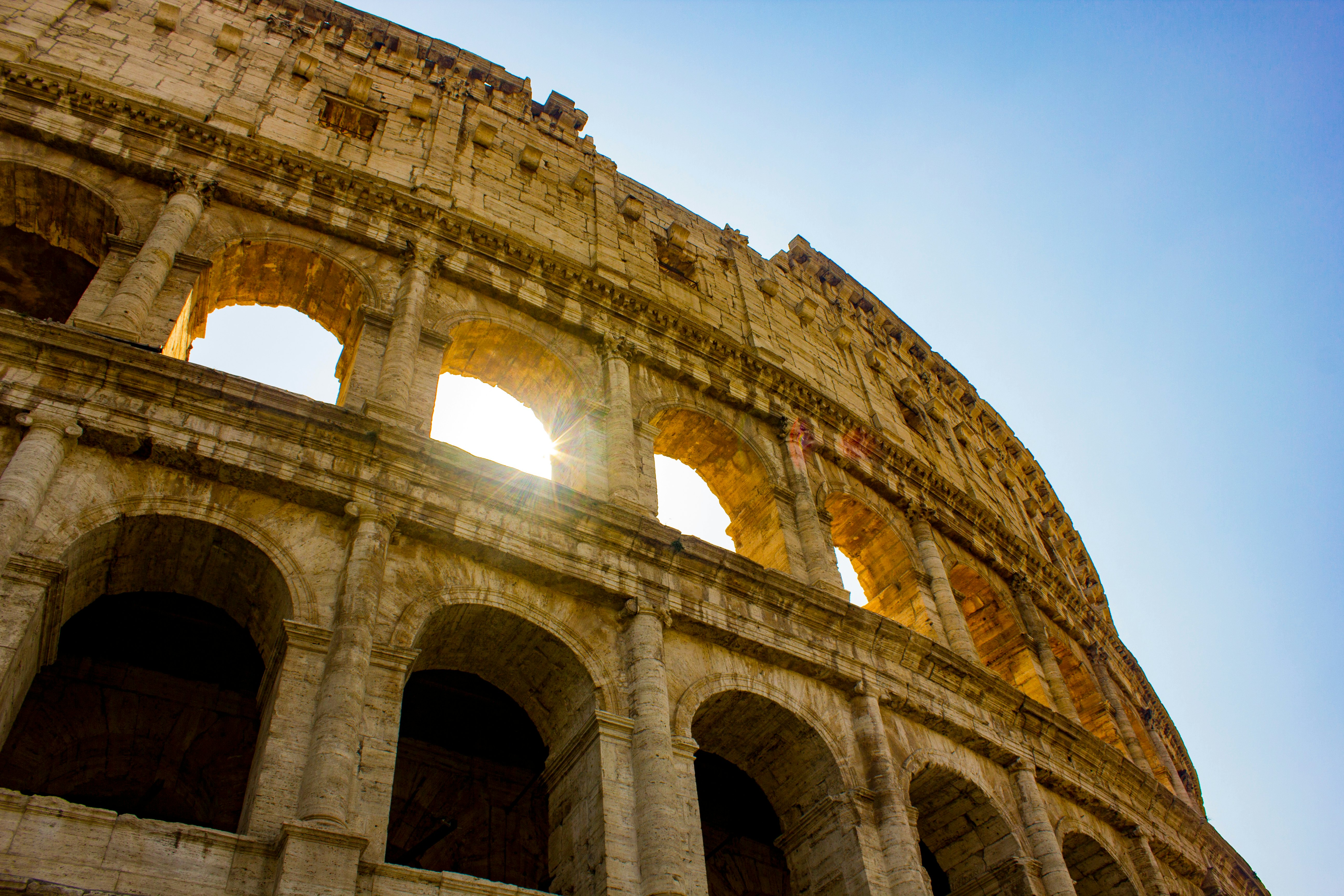
Influence on Western Architecture
The influence of Roman architecture can be seen in countless buildings throughout the world. From the Roman Forum to the Baths of Caracalla, the Roman Empire left an indelible mark on architectural history.
Masterpieces of the Renaissance
Humanism and Rebirth
The Renaissance marked a revival of classical art and architecture. Artists and architects like Michelangelo, Brunelleschi, and Leonardo da Vinci looked to ancient Greece and Rome for inspiration.
New Perspectives
Renaissance architecture emphasized proportion, balance, and symmetry. The use of perspective in painting and architecture created a sense of depth and realism.
Iconic Landmarks
The Renaissance gave rise to some of the most iconic landmarks in Italy, including the Duomo in Florence, the Basilica of St. Peter’s in Rome, and the Doge’s Palace in Venice.
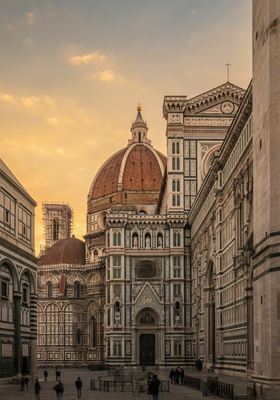
The Rise of Baroque Opulence
Dramatic and Theatrical
The Baroque era brought a shift towards grandeur and drama in architecture. The use of ornate decorations, elaborate facades, and dynamic spaces created a sense of awe and wonder.
Emphasis on Movement
Baroque architecture emphasized movement and illusion. The use of curves, spirals, and dramatic lighting created a sense of dynamism and energy.
Influence of the Church
The Catholic Church was a major patron of Baroque art and architecture. Churches like St. Peter’s Basilica in Rome are prime examples of the era’s opulence and grandeur.
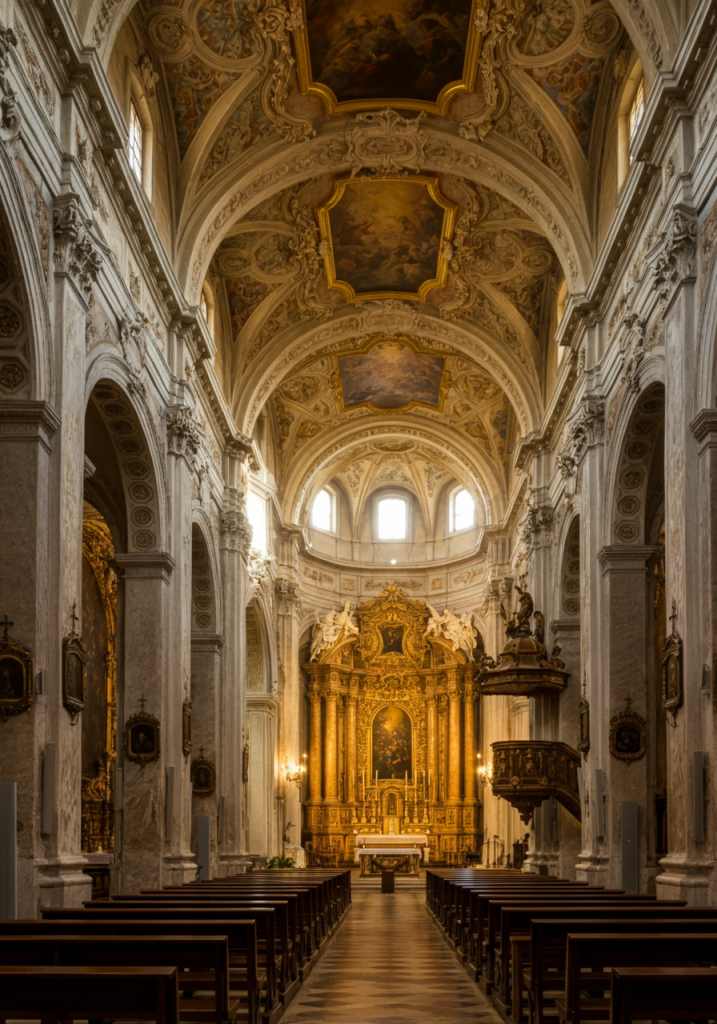

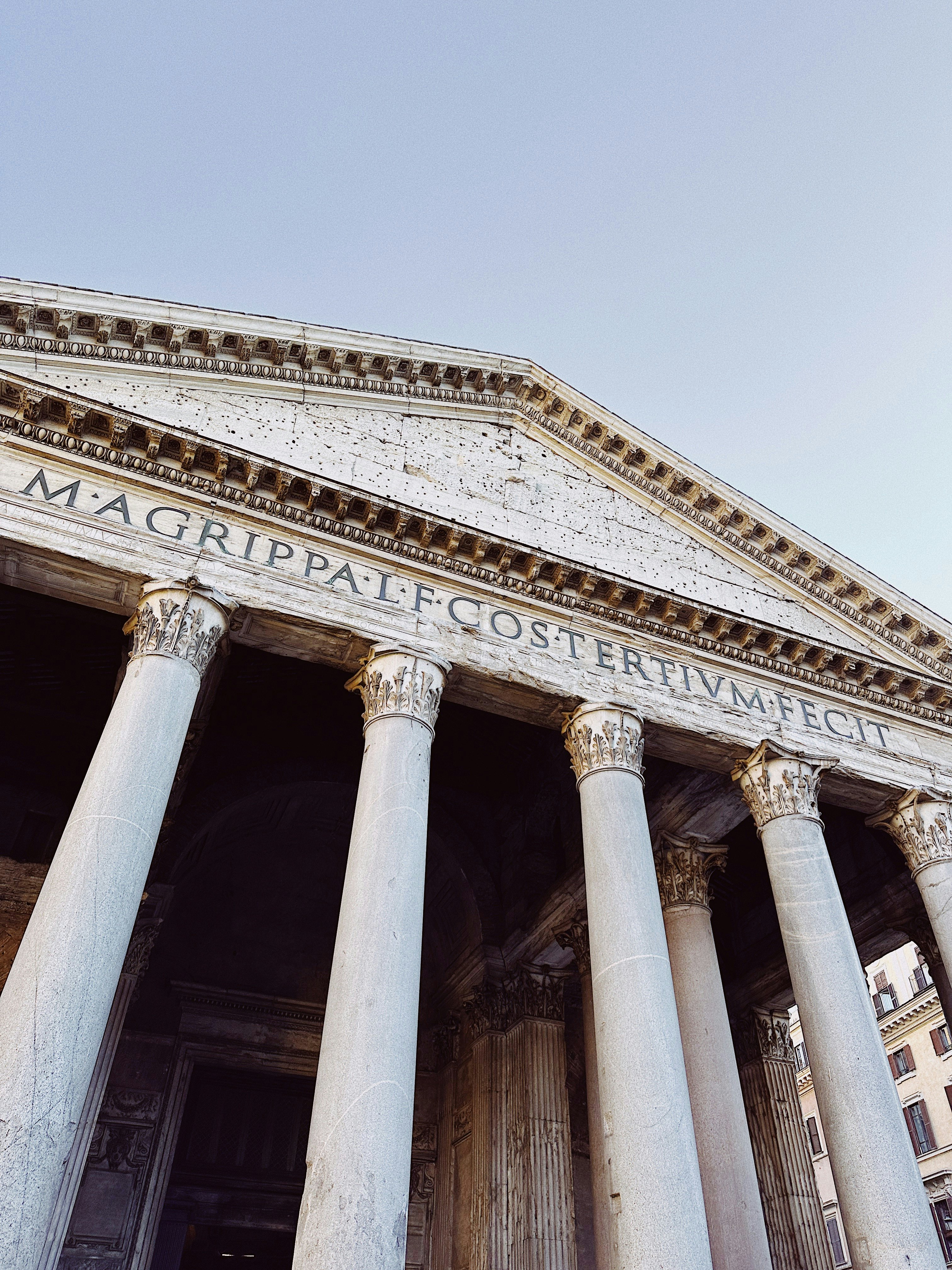
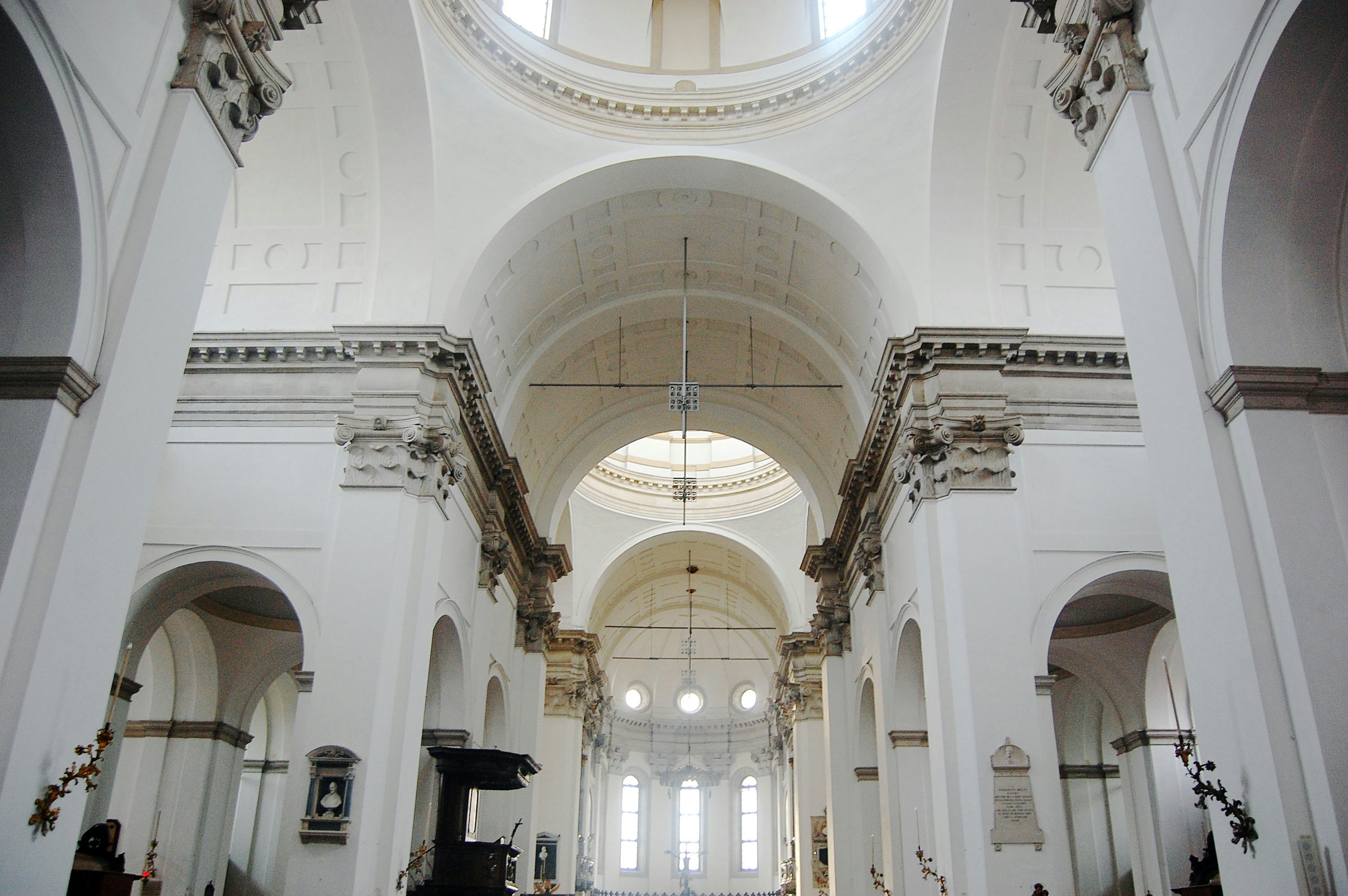
Neoclassical Elegance and Symmetry
Return to Classical Principles
The Neoclassical era saw a revival of classical principles of order, harmony, and restraint. Architects like Palladio and Piranesi drew inspiration from ancient Greek and Roman architecture.
Emphasis on Simplicity and Order
Neoclassical architecture emphasized simplicity, order, and balance. Buildings were often designed with symmetrical facades, elegant columns, and restrained ornamentation.
Public Buildings and Palaces
Neoclassical architecture was widely used for public buildings, palaces, and grand residences. It became a popular style throughout Europe and the Americas.
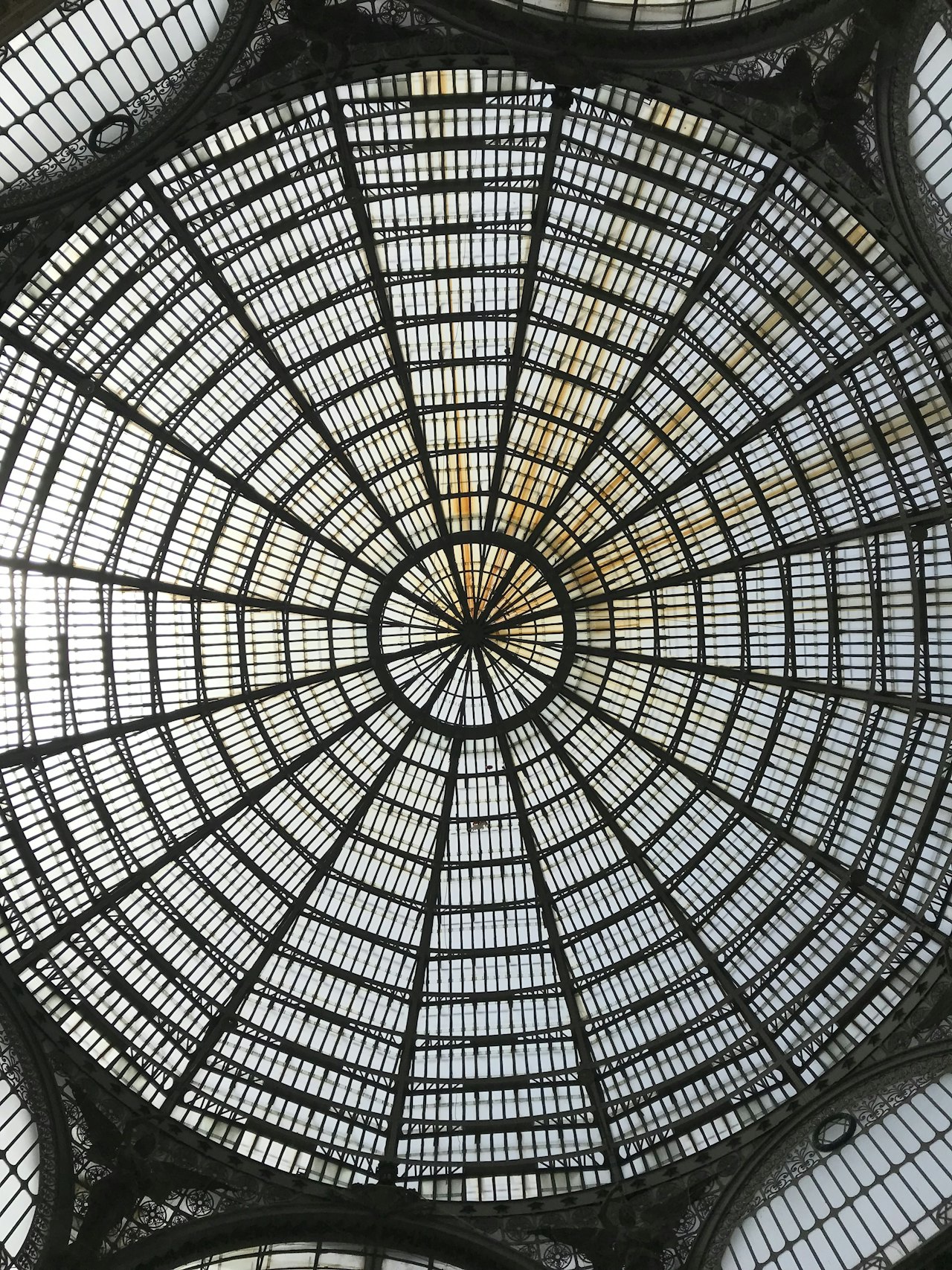
Secrets of Italian Monuments
Behind the majestic facades of Italian monuments lie fascinating stories and little-known architectural details. Every stone, every arch, and every hidden corridor tells a secret story waiting to be discovered.
Hidden Passageways
From the Colosseum to the Vatican palaces, numerous Italian monuments conceal a network of underground corridors and secret passages, used for centuries to escape sieges or hold private meetings
Mysterious Symbols
Renaissance churches and palaces are decorated with esoteric symbols and hidden messages, testifying to the deep connection between art, religion, and ancient secret societies.
Innovative Construction Techniques
Italian architects used ingenious and often secret techniques to create surprising acoustic effects and natural ventilation systems, many of which remain a mystery today.
Famous Places to Visit in Rome
Rome, the Eternal City, offers an unparalleled journey through history, art, and culture. From ancient ruins to Renaissance masterpieces, every corner of the city tells a fascinating story spanning over two millennia.
The iconic Colosseum stands as a testament to the grandeur of ancient Rome, while the Vatican Museums house some of the world’s most precious artworks. The Pantheon’s architectural marvel, the romantic Trevi Fountain, and the sprawling Roman Forum are must-see attractions that showcase Rome’s rich heritage.
Don’t miss the charming streets of Trastevere, the artistic treasures of the Borghese Gallery, or the spectacular views from the Palatine Hill. Each of these landmarks contributes to Rome’s status as one of the world’s most captivating cultural destinations.
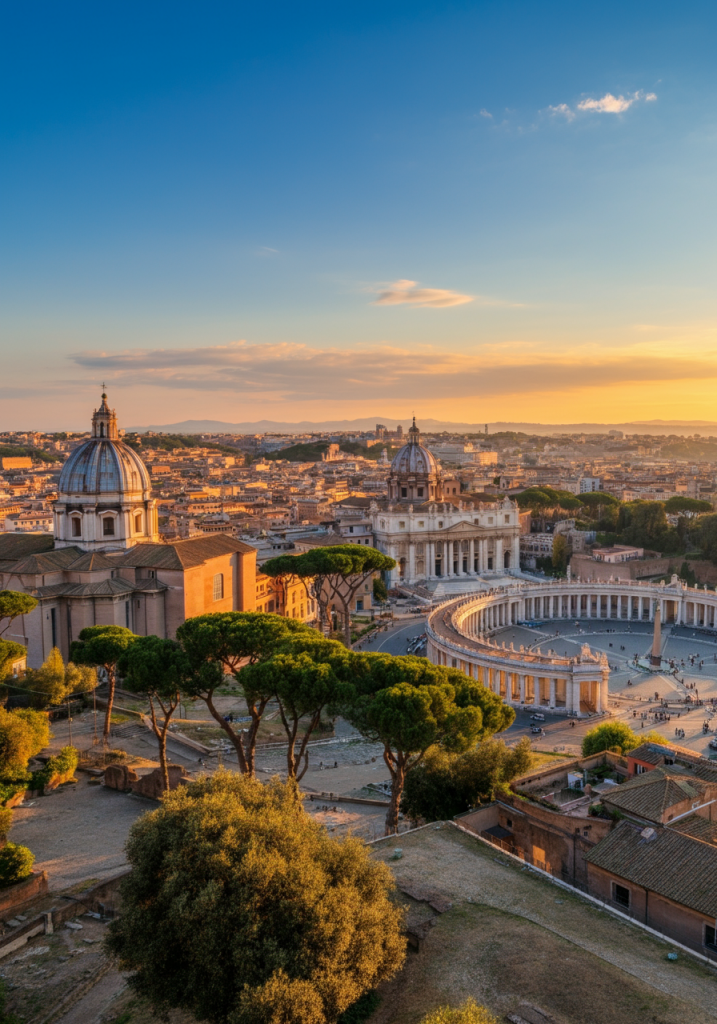
Rome: A Journey Through 2,700 Years of History
Founded in 753 BCE according to legend, Rome grew from a small settlement on the Palatine Hill to become the capital of the world’s greatest empire. By 100 CE, it became the first city to reach one million inhabitants, establishing unprecedented standards in engineering, architecture, and urban planning that would influence cities for millennia to come.
Rome’s golden age during the Roman Empire (27 BCE – 476 CE) saw the construction of iconic monuments that still stand today – the Colosseum (80 CE), the Pantheon (126 CE), and the Forum. The city’s influence continued through the Middle Ages as the center of the Catholic Church, with the Vatican City established as an independent state in 1929, making Rome unique as the only city in the world to contain a sovereign nation within its boundaries.
Today, Rome’s significance extends far beyond its historical legacy. As Italy’s capital and largest city, it serves as a major global political, cultural, and economic center. The city’s artistic treasures, architectural wonders, and archaeological sites have earned it UNESCO World Heritage status, while its role in international diplomacy, tourism, and fashion continues to shape global culture in the 21st century.
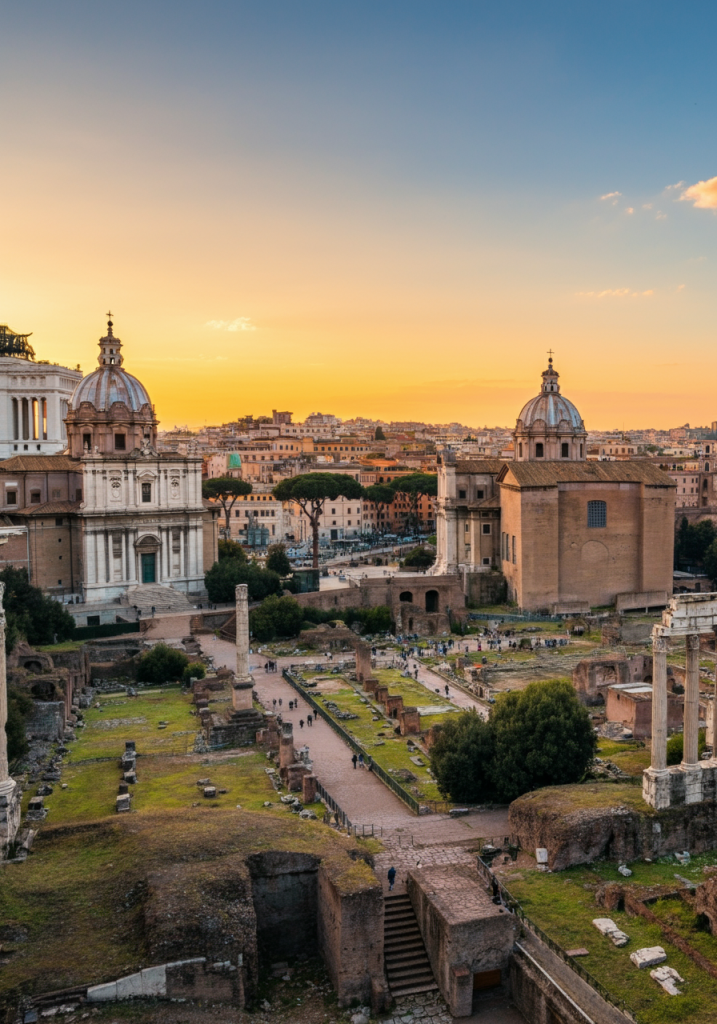
How to Travel from Rome to Milan: A Complete Transportation Guide
Planning your journey between Italy’s iconic cities? Here are all the transportation options available for traveling from Rome to Milan, with details on duration, cost, and convenience.
High-Speed Train (Fastest Option)
- Duration: 3 hours 10 minutes on Frecciarossa or Italo trains
- Frequency: Multiple departures daily from Roma Termini to Milano Centrale
- Cost: €39-120 depending on class and booking time
- Advantage: City center to city center travel, comfortable seating, scenic views
Flying (Time-Efficient)
- Duration: 1 hour 10 minutes (plus airport transfers)
- Frequency: Multiple daily flights from various airlines
- Cost: €50-200+ including baggage
- Note: Add 2-3 hours for airport transfers and security
Driving (Most Flexible)
- Duration: 5-6 hours via A1 motorway
- Distance: Approximately 575 kilometers
- Cost: €80-100 for fuel and tolls
- Benefit: Freedom to stop at attractions along the way
Bus Service (Budget Option)
- Duration: 7-8 hours
- Providers: FlixBus and other operators
- Cost: €20-40 per person
- Feature: WiFi and comfortable seating available
For most travelers, the high-speed train offers the best balance of speed, comfort, and convenience. Book tickets in advance for the best rates and remember that both Rome and Milan have excellent public transportation systems for getting to and from stations.
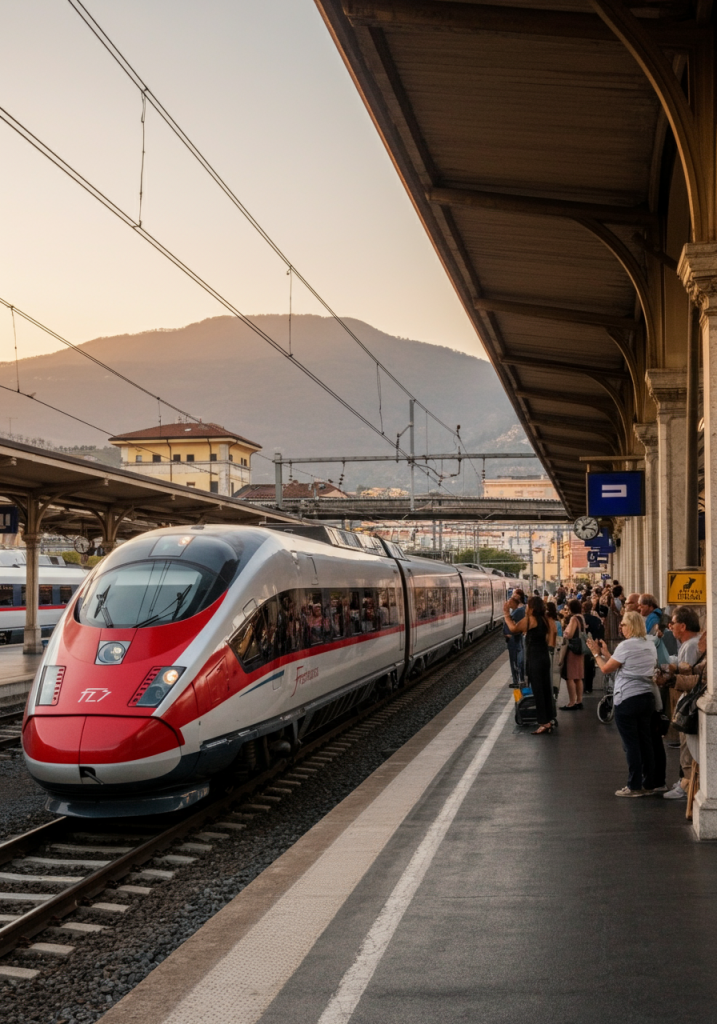
Famous Places to Visit in Milan
Milan, Italy’s fashion and financial capital, combines medieval architecture with modern innovation to create a uniquely cosmopolitan atmosphere. This sophisticated metropolis offers visitors an array of cultural and historical attractions that shouldn’t be missed.
- The iconic Milan Cathedral (Duomo) – A stunning example of Gothic architecture and the city’s most recognizable landmark
- The historic Galleria Vittorio Emanuele II – One of the world’s oldest shopping malls, featuring magnificent glass-vaulted arcades
- Santa Maria delle Grazie – Home to Leonardo da Vinci’s masterpiece “The Last Supper”
- The renowned Teatro alla Scala – One of the world’s most prestigious opera houses
- The medieval Sforza Castle – A fortress housing several of the city’s most important museums
Each of these landmarks showcases Milan’s rich heritage as a center of art, culture, and innovation in Italy.
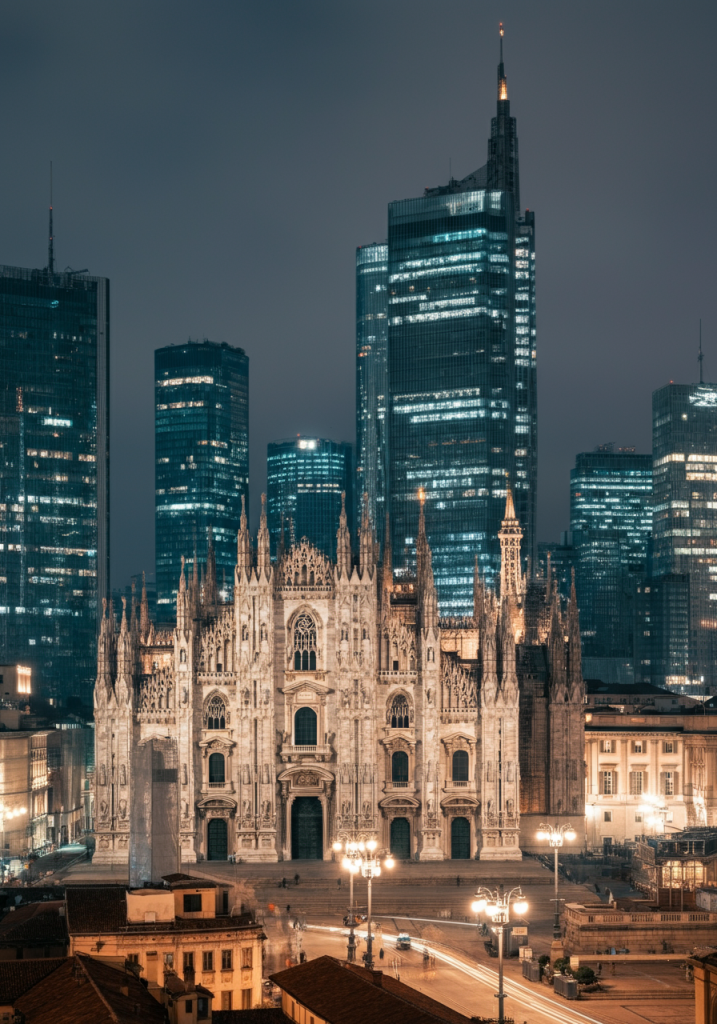
The History of the Milan Cathedral Duomo
The Milan Cathedral, also known as the Duomo di Milano, is one of the most impressive and recognizable architectural landmarks in Italy. Its construction began in 1386 and continued for nearly six centuries, making it one of the longest-running cathedral building projects in the world.
The original design of the cathedral was conceived by architect Simone da Orsenigo in the Gothic style. However, over time, the design has been modified to incorporate various architectural movements, such as Renaissance, Baroque, and Neo-Gothic. This unique synthesis of styles makes the Duomo a truly remarkable monument of art.
The cathedral is awe-inspiring in its sheer size – it measures 158 meters in length, and the central nave reaches a height of 45 meters. The façade of the Duomo is adorned with thousands of statues, including depictions of saints, apostles, and biblical figures. Furthermore, the cathedral’s roof is topped with 135 spires, which give it an unmistakable silhouette against the Milan skyline.
The magnificent Milan Cathedral, locally known as the Duomo di Milano, stands as one of the most impressive examples of Gothic architecture in Italy. Construction began in 1386 under Archbishop Antonio da Saluzzo and continued for nearly six centuries, with the final details completed only in 1965.
This architectural marvel required contributions from numerous architects, artists, and workers across generations. The cathedral’s construction tells a fascinating story of medieval engineering, with innovative techniques developed specifically to transport the massive marble blocks from the Candoglia quarries and lift them to unprecedented heights.
Today, the Duomo remains the largest church in Italy and the third-largest in the world. Its forest of 135 spires, 3,400 statues, and intricate gothic details represent not just a remarkable architectural achievement, but also the enduring spirit and dedication of the Milanese people across centuries of history.
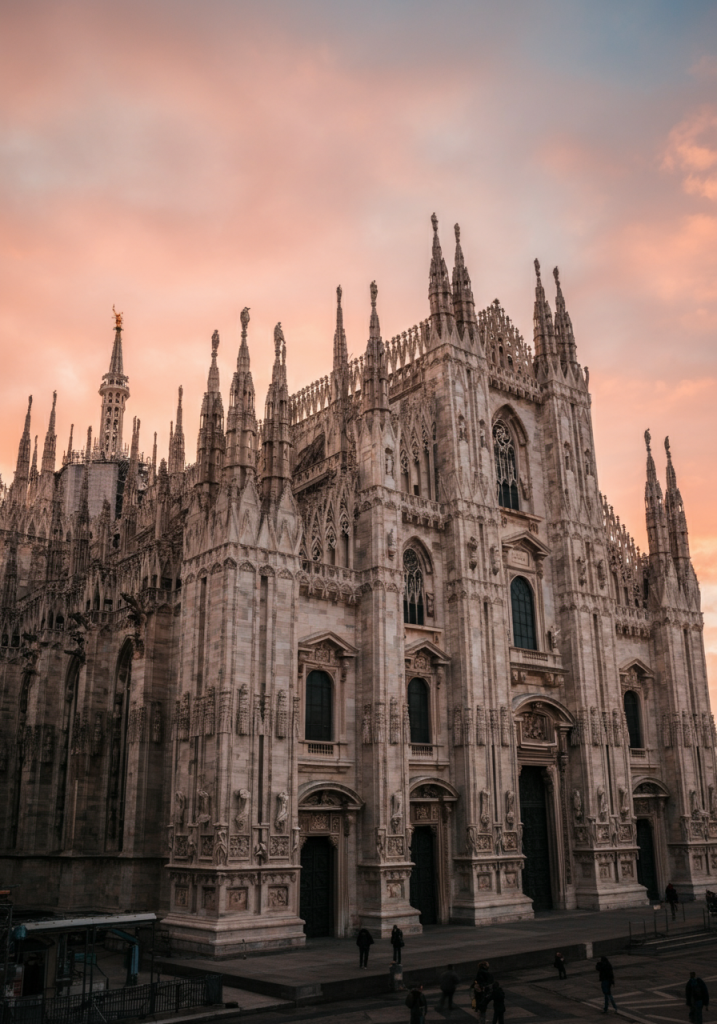
Teatro alla Scala: The Operatic Jewel of Milan
The Teatro alla Scala, commonly known as La Scala, is one of the most prestigious opera houses in the world and a crown jewel of Milan’s cultural heritage. Founded in 1778 under the patronage of Empress Maria Theresa of Austria, this iconic institution has served as the principal stage for Italian opera for over two centuries.
The theater was built on the site of the former Church of Santa Maria della Scala, from which it derives its name. Designed by the renowned architect Giuseppe Piermarini, the neoclassical building opened its doors on August 3, 1778, with the opera “L’Europa riconosciuta” by Antonio Salieri, marking the beginning of a remarkable artistic journey.
Throughout its history, La Scala has premiered numerous masterpieces by the greatest Italian composers, including works by Verdi, Puccini, and Rossini. The theater has also hosted the most celebrated artists, conductors, and directors, cementing its reputation as a global symbol of operatic excellence and Italian cultural achievement. Today, it continues to preserve its tradition of artistic innovation while maintaining its historic significance at the heart of Milan.
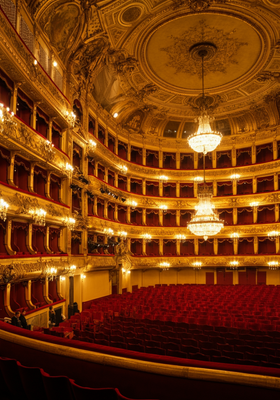
<head>
<script async src="https://pagead2.googlesyndication.com/pagead/js/adsbygoogle.js?client=ca-pub-9464364489511962"
crossorigin="anonymous"></script>
</head> Famous Churches of Milan
Milan’s rich religious heritage is reflected in its magnificent churches, each telling a unique story of faith, art, and history. Beyond the famous Duomo, the city hosts several architectural and spiritual treasures that have shaped its cultural landscape for centuries.
- The Basilica of Sant’Ambrogio, dating back to the 4th century, stands as one of Milan’s oldest and most significant churches, featuring remarkable Romanesque architecture
- The stunning Basilica of San Lorenzo Maggiore showcases impressive Roman columns and Byzantine influences, making it a testament to Milan’s ancient Christian roots
- Santa Maria delle Grazie, a UNESCO World Heritage site, houses Leonardo da Vinci’s masterpiece “The Last Supper” and exemplifies the beauty of Renaissance architecture
- The Basilica of Sant’Eustorgio contains the alleged relics of the Three Magi and features a blend of Romanesque and Gothic styles
These churches not only serve as places of worship but also as repositories of priceless artworks, architectural innovations, and centuries of Milanese history.
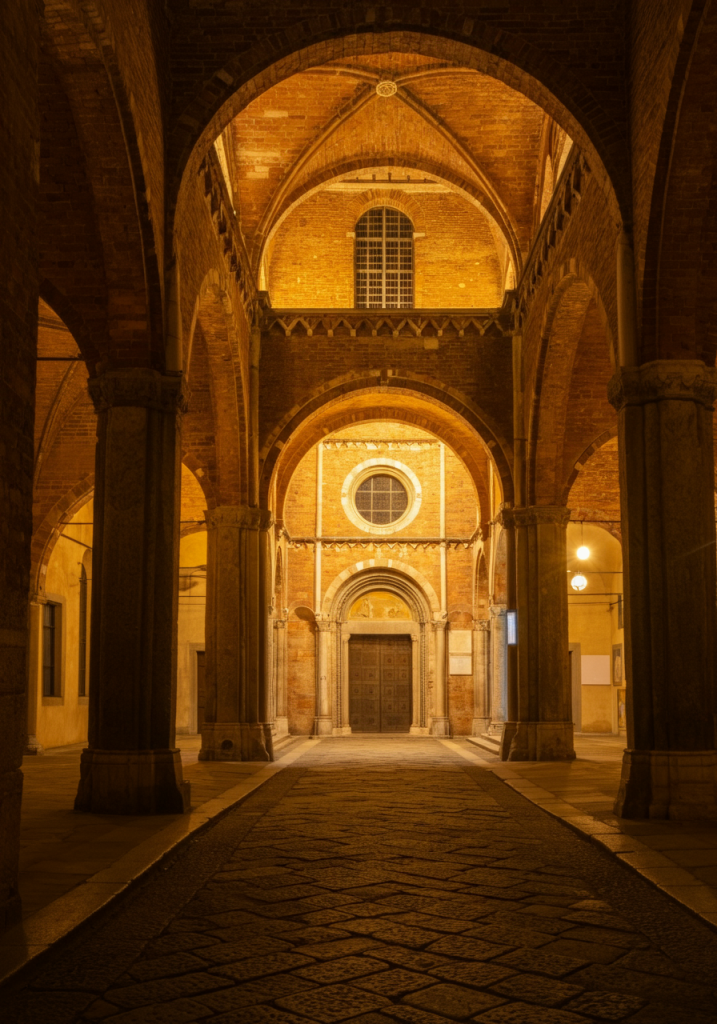
Leonardo da Vinci’s The Last Supper
Adorning the wall of Milan’s Santa Maria delle Grazie monastery, Leonardo da Vinci’s masterpiece “The Last Supper” stands as one of the most influential works in the history of Western art. Created between 1495 and 1498, this monumental mural painting captures the dramatic moment when Jesus announces that one of his disciples would betray him.
The revolutionary painting technique employed by da Vinci, while experimental, led to ongoing preservation challenges throughout the centuries. Rather than using traditional fresco methods, the artist applied tempera and oil on a dry wall, allowing him to achieve unprecedented levels of detail and emotional expression in the apostles’ faces and gestures.
Today, visitors from around the world marvel at this 460 x 880 cm masterpiece, though access is strictly controlled to protect the delicate painting. The work’s influence extends far beyond its religious significance, as it represents a pinnacle of Renaissance art and da Vinci’s genius in composition, perspective, and psychological characterization
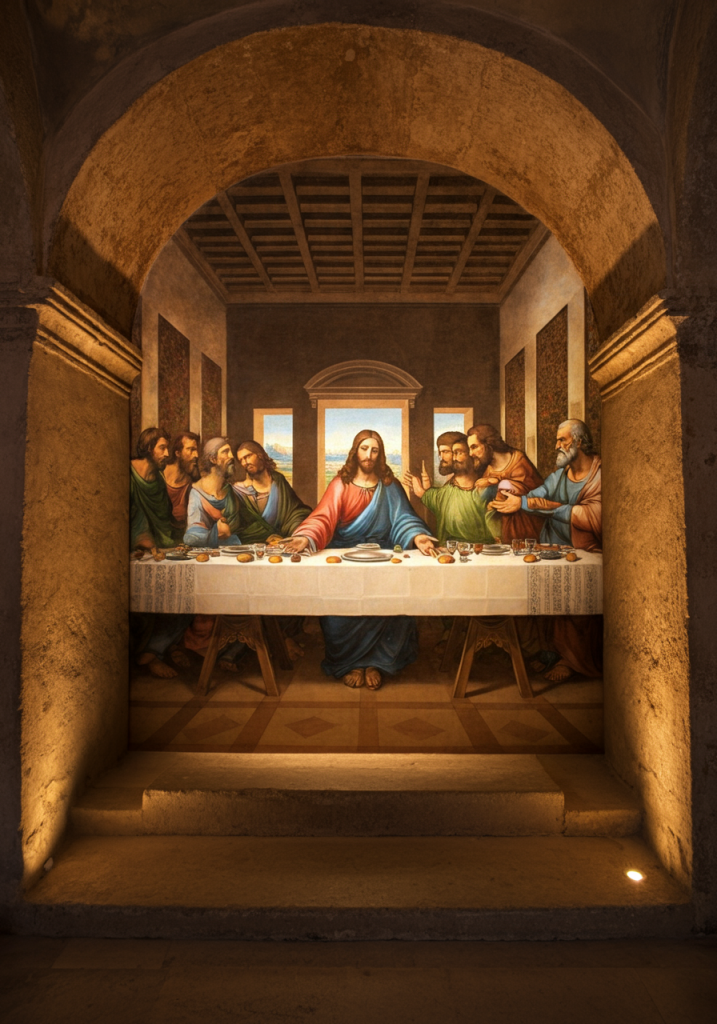
The Life and Legacy of Leonardo da Vinci
Leonardo da Vinci (1452-1519) embodies the spirit of the Italian Renaissance, distinguished as a painter, sculptor, architect, scientist, and inventor. Born in Vinci, near Florence, he was trained in the workshop of Verrocchio, where he developed his extraordinary artistic abilities and insatiable curiosity for the natural world.
His professional life was primarily divided between Florence and Milan, where he served powerful patrons such as Lorenzo de’ Medici and Ludovico Sforza. During these years, he produced some of the most celebrated masterpieces in art history, including the “Mona Lisa” and “The Last Supper,” while simultaneously conducting pioneering studies in fields as diverse as anatomy, botany, and engineering.
His famous codices and notebooks, filled with thousands of drawings and notes written in his distinctive mirror-image script, reveal a mind in constant exploration. Leonardo spent the final years of his life in France, in the service of King Francis I, where he continued his studies and projects until his death in 1519, leaving a legacy that continues to inspire and captivate the modern world.
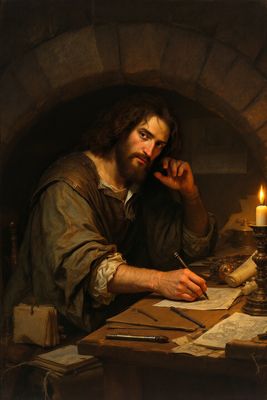
National Museum of Science and Technology Leonardo da Vinci
Located in the historic center of Milan, the National Museum of Science and Technology Leonardo da Vinci is the largest technical-scientific museum in Italy. Housed in the former monastery of San Vittore al Corpo, this important cultural institution represents an extraordinary tribute to the Renaissance genius and his scientific legacy.
The museum boasts the world’s most important collection of historical models made from Leonardo da Vinci’s drawings. These models, carefully constructed based on his codices and notes, allow visitors to explore the artist’s innovative ideas in fields like engineering, aviation, and architecture.
In addition to the permanent exhibitions dedicated to Leonardo, the museum offers a unique interactive experience through educational workshops, scientific demonstrations, and interactive exhibits. These spaces allow visitors of all ages to personally experience the scientific principles and inventions that characterized the work of the great Tuscan master.
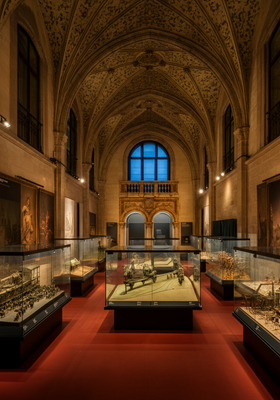
Where to Find Leonardo da Vinci’s Most Famous Artworks
Leonardo da Vinci’s masterpieces are housed in some of the world’s most prestigious museums and locations. Here are his most celebrated works and where to find them:
The Louvre Museum, Paris
Home to the iconic “Mona Lisa” (La Gioconda), the “Virgin of the Rocks,” and “Saint John the Baptist”
Santa Maria delle Grazie, Milan
“The Last Supper” mural remains in its original location in the church’s refectory, requiring advance reservations for viewing
Uffizi Gallery, Florence
Houses the “Annunciation” and the unfinished “Adoration of the Magi”
Vatican Museums, Rome
Features the unfinished “St. Jerome in the Wilderness”
Hermitage Museum, St. Petersburg
Displays two versions of the “Madonna Litta” and “Benois Madonna”
Due to the delicate nature of these masterpieces, it’s recommended to book tickets in advance, especially for viewing “The Last Supper” which has strict visitor limitations.
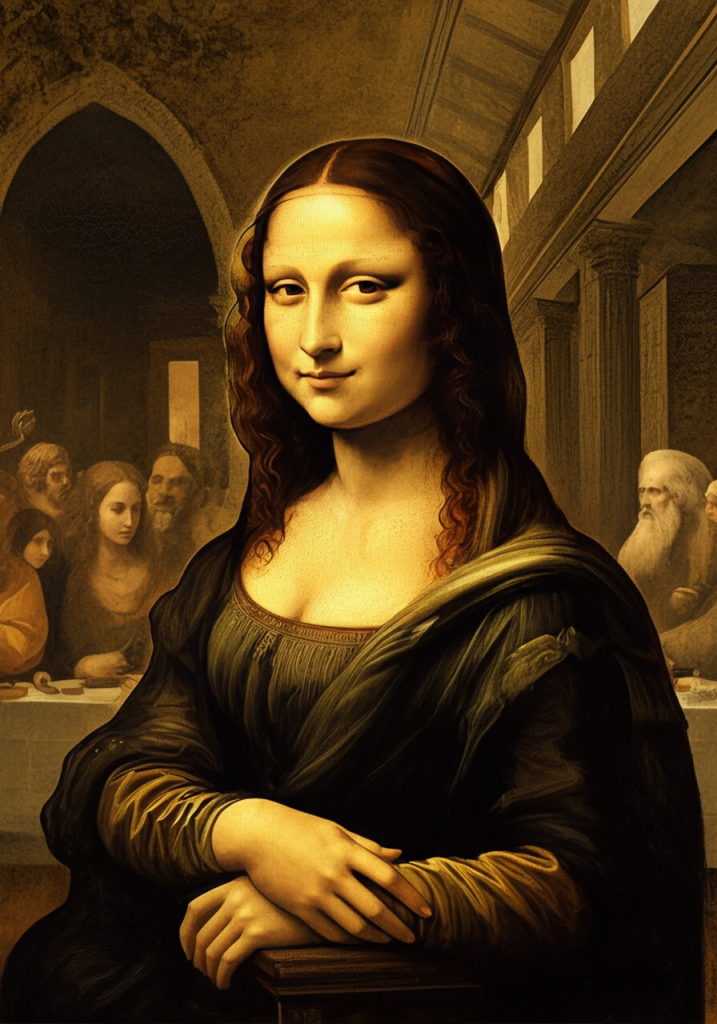
The Enigmatic Story of the Mona Lisa
The Mona Lisa, Leonardo da Vinci’s most renowned masterpiece, has captivated audiences for over five centuries with its mysterious smile and innovative artistic techniques. Created between 1503 and 1519, this iconic portrait represents the pinnacle of Renaissance artistry and remains the world’s most famous painting.
The subject of the portrait is believed to be Lisa Gherardini, the wife of wealthy Florentine silk merchant Francesco del Giocondo. Da Vinci employed his revolutionary sfumato technique—the subtle blending of tones—to create the painting’s soft, dreamlike quality and the subject’s famously ambiguous expression.
Today, the Mona Lisa resides in the Louvre Museum in Paris, protected behind bulletproof glass and viewed by millions of visitors annually. The painting’s fame has only grown over time, particularly after its dramatic theft in 1911 and subsequent recovery in 1913, cementing its status as not just a masterpiece of Renaissance art, but as a global cultural phenomenon.
The Enigmatic Story of the Mona Lisa
The Mona Lisa, Leonardo da Vinci’s most renowned masterpiece, has captivated audiences for over five centuries with its mysterious smile and innovative artistic techniques. Created between 1503 and 1519, this iconic portrait represents the pinnacle of Renaissance artistry and remains the world’s most famous painting.
The subject of the portrait is believed to be Lisa Gherardini, the wife of wealthy Florentine silk merchant Francesco del Giocondo. Da Vinci employed his revolutionary sfumato technique—the subtle blending of tones—to create the painting’s soft, dreamlike quality and the subject’s famously ambiguous expression.
Today, the Mona Lisa resides in the Louvre Museum in Paris, protected behind bulletproof glass and viewed by millions of visitors annually. The painting’s fame has only grown over time, particularly after its dramatic theft in 1911 and subsequent recovery in 1913, cementing its status as not just a masterpiece of Renaissance art, but as a global cultural phenomenon.
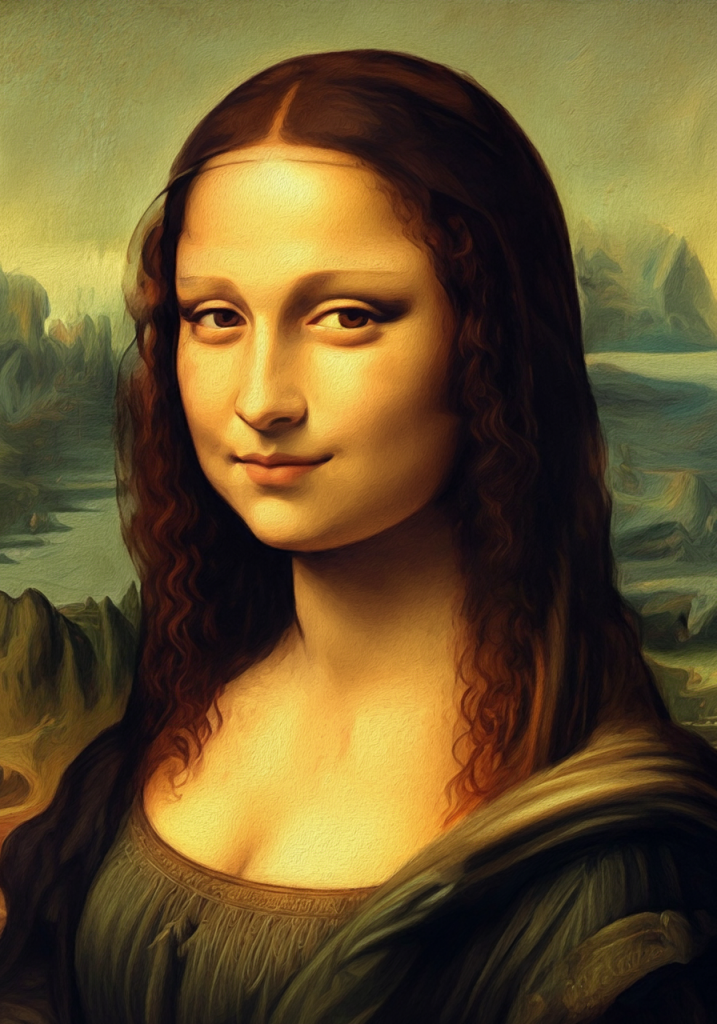
Milan’s Premier Art Museums and Their Masterpieces
Milan stands as one of Italy’s most significant cultural centers, housing some of the world’s most renowned art collections across its prestigious museums.
Pinacoteca di Brera
- Houses Mantegna’s “Dead Christ” and Caravaggio’s “Supper at Emmaus”
- Features Francesco Hayez’s iconic “The Kiss”
- Home to Raphael’s “Marriage of the Virgin”
Pinacoteca Ambrosiana
- Displays Leonardo da Vinci’s Codex Atlanticus
- Features Caravaggio’s “Basket of Fruit”
- Houses Raphael’s cartoon for the School of Athens
Museum of Novecento
- Showcases 20th-century Italian art
- Features works by Modigliani and Marinetti
- Houses significant Futurist movement pieces
Gallerie d’Italia
- Exhibits important 19th and 20th-century works
- Features Canova’s neoclassical masterpieces
- Displays contemporary Italian art collections
Each museum offers unique perspectives on different periods of art history, from Renaissance masterpieces to modern Italian artworks, making Milan a must-visit destination for art enthusiasts.
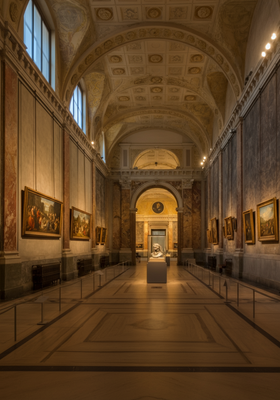
Most Romantic Places in Milan
Milan may be known for its fashion and business, but the city harbors countless intimate spots perfect for romantic encounters. The enchanting Navigli district, with its candlelit restaurants along ancient canals, creates an atmosphere reminiscent of Venice, especially magical during sunset when the water reflects the golden light.
Castello Sforzesco Gardens
These historic gardens offer secluded pathways and peaceful fountains, ideal for intimate walks hand in hand, particularly beautiful during spring when the flowers are in full bloom.
Terrazza Aperol
Overlooking the stunning Duomo, this rooftop bar provides breathtaking views of the cathedral spires, especially enchanting during the golden hour when the marble glows pink.
Villa Necchi Campiglio
This elegant 1930s villa surrounded by a serene garden and pool offers a hidden oasis of tranquility, perfect for couples seeking a peaceful retreat from the city’s bustle.
For the ultimate romantic experience, time your visit to coincide with an opera at Teatro alla Scala, where countless love stories have unfolded both on stage and among the audience in its opulent boxes since 1778.
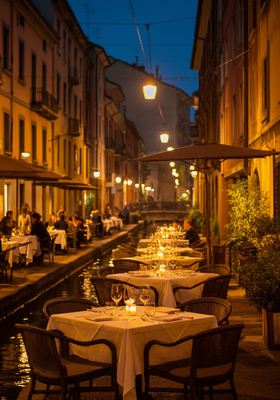
How to Travel from Milan to Venice: All Transportation Options
When planning your journey from Milan to Venice, you have several convenient transportation options to choose from, each with its own advantages.
High-Speed Train (Fastest Option)
Direct trains depart frequently from Milano Centrale to Venezia Santa Lucia, taking just 2 hours and 25 minutes. Book through Trenitalia or Italo for best prices. Trains run from early morning until late evening.
Driving by Car (Most Flexible)
The 280km journey takes about 3 hours via the A4 motorway. Consider toll costs and parking limitations in Venice, where cars must be left at Piazzale Roma.
Bus Service (Most Economical)
Several companies offer bus services, with journey times of 4-5 hours. While slower, buses provide the most budget-friendly option and often include Wi-Fi and comfortable seating.
Organized Tours (Most Comprehensive)
Day trips and guided tours combine transportation with sightseeing, perfect for travelers wanting a structured experience. Most tours depart early morning and return late evening.
For the best experience, book your transportation in advance, especially during peak tourist season (June-September) or during major Venetian festivals.
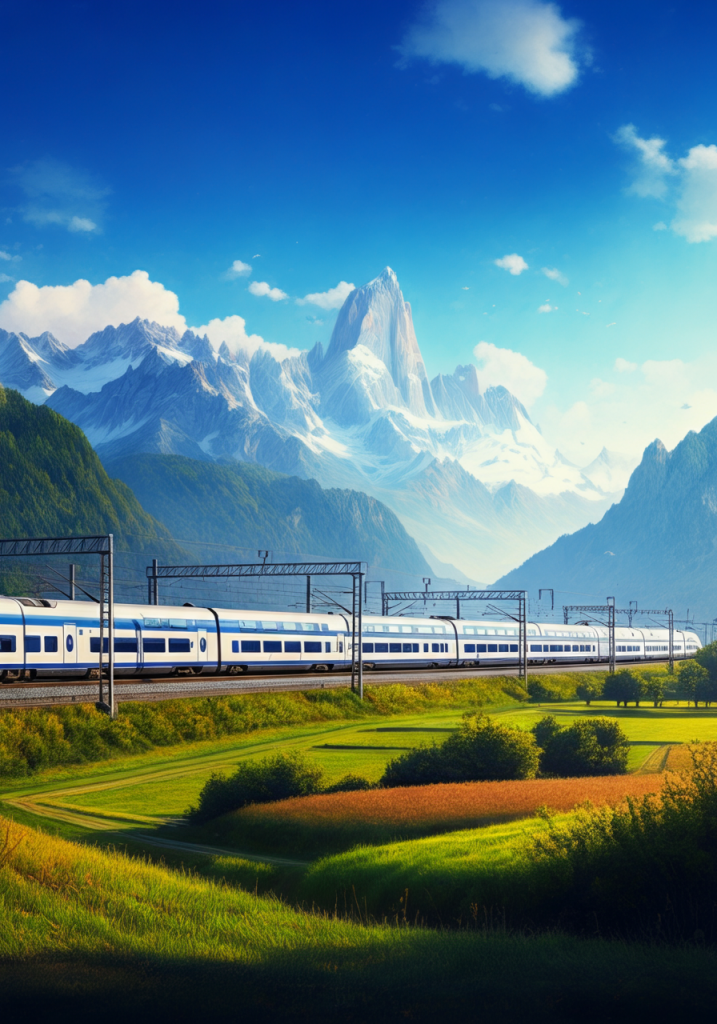
Welcome to Venice: Most Famous Landmarks and Their Locations
Venice, the enchanting city built across 118 small islands in northern Italy, captures hearts with its magnificent network of canals, ornate Gothic architecture, and centuries of artistic heritage. This extraordinary floating city presents visitors with an array of must-see attractions, from the iconic St. Mark’s Square with its stunning basilica to the grand Rialto Bridge spanning the Grand Canal. As you navigate through Venice’s labyrinthine streets and waterways, you’ll discover hidden architectural treasures, world-class museums, and charming local neighborhoods, each contributing to the city’s reputation as one of the world’s most remarkable destinations.
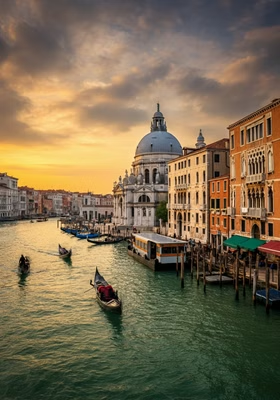
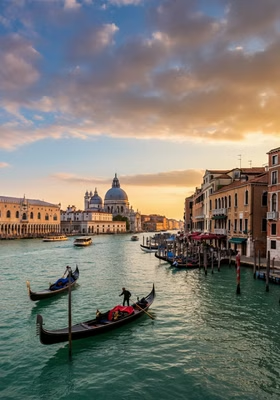
The Story of Venice
Rising from the waters of the Venetian Lagoon, Venice’s story begins in the 5th century when mainland residents fled from barbarian invasions to the safety of the marshy islands. Through remarkable ingenuity, these early settlers transformed unstable mud flats into the foundations of one of history’s most extraordinary cities.
By the 12th century, Venice had evolved into a formidable maritime republic, dominating Mediterranean trade routes and amassing incredible wealth through its monopoly on salt, silk, and spices. This golden age saw the construction of the city’s most magnificent palaces and churches, many of which still stand today as testaments to Venice’s former glory.
The city’s unique position as a crossroads between East and West fostered a distinctive culture that blended Byzantine, Gothic, and Renaissance influences. This cultural fusion is reflected in Venice’s architecture, art, and traditions, from the exotic domes of St. Mark’s Basilica to the delicate glasswork of Murano.
Though Venice’s political power eventually waned with the discovery of new trade routes and the rise of other European powers, its cultural significance never diminished. Today, the city continues to captivate millions of visitors with its timeless beauty, while facing modern challenges such as rising sea levels and sustainable tourism – writing new chapters in its remarkable story.
Visit St. Mark’s Basilica
Standing majestically at the eastern end of St. Mark’s Square, the Basilica di San Marco represents the epitome of Venetian glory and Byzantine architectural splendor. This architectural masterpiece, adorned with over 8,000 square meters of luminous gold mosaics, tells stories spanning centuries through its intricate artworks and religious symbols.
Inside, visitors are immediately captivated by the cavernous golden domes, the precious Pala d’Oro altarpiece, and the famous Bronze Horses. The basilica’s museum houses priceless treasures including tapestries, carpets, and religious artifacts that showcase Venice’s historical connection between East and West.
Visitor Tips
Book skip-the-line tickets online to avoid long queues, especially during peak season. Modest dress is required (no bare shoulders or knees), and photography is not permitted inside.
Best Time to Visit
Visit early morning or late afternoon to avoid crowds. The mosaics are particularly spectacular during the daily lighting times from 11:30 AM to 12:45 PM.
Don’t Miss
Take the stairs to the museum and outdoor terrace for breathtaking views of St. Mark’s Square and up-close views of the basilica’s architectural details.
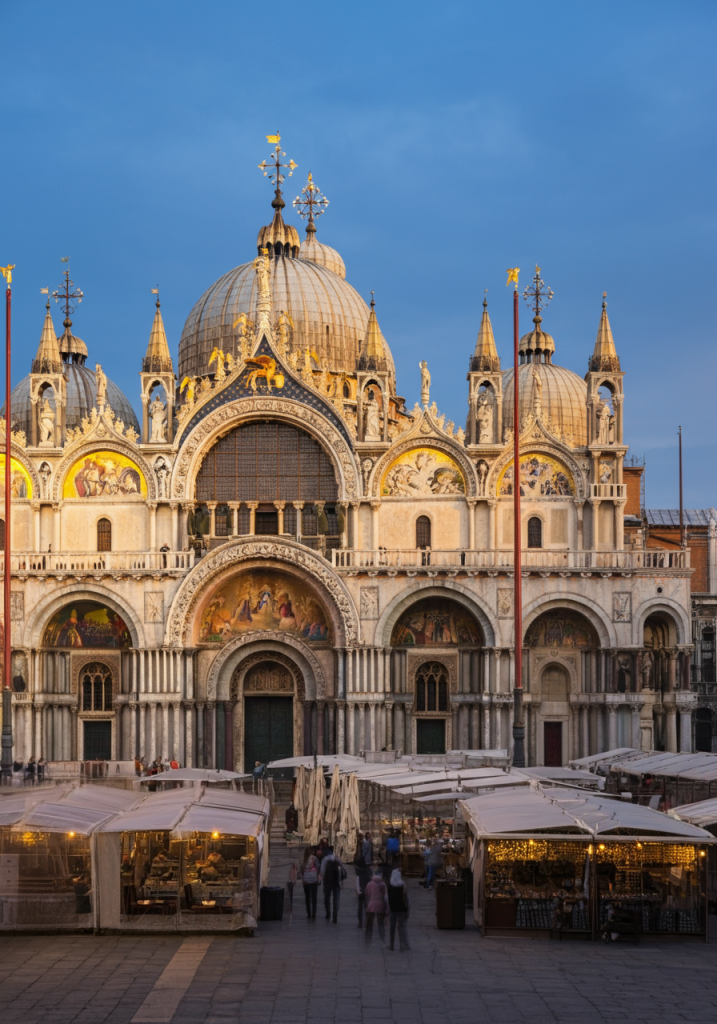
Church of San Nicola, Santa Croce del Lido
Rising gracefully from Venice’s tranquil Lido island, the 12th-century Church of San Nicola embodies the pure essence of Venetian religious architecture. Its commanding stone walls, graceful rounded arches, and perfectly proportioned columns create a masterful example of Romanesque design that has watched over this peaceful corner of Venice for nearly a millennium.
Beyond its dignified exterior lies a treasure trove of artistic and spiritual heritage. Vibrant frescoes dance across ancient walls, while masterfully carved wooden choir stalls showcase the highest achievements of Venetian craftsmanship. The church’s soaring campanile, once a beacon for returning sailors, continues to define the Lido skyline. Each architectural detail and sacred artifact within tells a chapter of Venice’s rich spiritual narrative.
Unlike the bustling crowds of San Marco, San Nicola offers visitors a serene glimpse into authentic Venetian spiritual life. At its heart stands a revered icon of Saint Nicholas, drawing pilgrims for centuries with tales of miraculous interventions. Here, in the peaceful Santa Croce district, the church maintains its centuries-old balance as both an active house of worship and a living monument to Venetian faith and artistry.
📍 Essential Visitor Information:
• Location: Riviera San Nicolò, 28, 30126 Lido VE, Italy
• Opening Hours: 8:00 AM – 12:00 PM and 4:00 PM – 7:00 PM daily
• Mass Schedule: Sundays 11:00 AM and 6:00 PM
• Access: Take vaporetto line 1 or 2 to Lido, then walk or take local bus
• Note: Modest dress required (covered shoulders and knees)
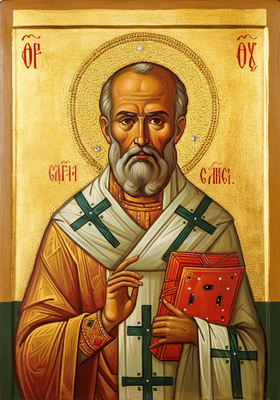
<head>
<script async src=”https://pagead2.googlesyndication.com/pagead/js/adsbygoogle.js?client=ca-pub-9464364489511962″
crossorigin=”anonymous”></script>
</head>
Complete Guide to Venice’s Historic Churches
Venice’s sacred landscape features over 100 churches, each telling its own story through centuries of art, architecture, and faith. From grand basilicas to intimate parish churches, these sanctuaries preserve the city’s spiritual and cultural heritage.
St. Mark’s Basilica (Basilica di San Marco)
Venice’s crown jewel, featuring Byzantine domes, golden mosaics, and the city’s patron saint’s relics. Located in Piazza San Marco.
Basilica di Santa Maria della Salute
An iconic baroque masterpiece built as thanks for the city’s delivery from plague, commanding the entrance to the Grand Canal.
Church of San Giorgio Maggiore
Palladio’s architectural masterwork on its own island, housing important paintings by Tintoretto.
Basilica dei Frari
Gothic church renowned for Titian’s “Assumption” and works by Bellini, plus tombs of famous Venetians.
Church of San Zaccaria
Features a blend of Gothic and Renaissance styles, with notable works by Bellini and an ancient crypt.
Church of the Redentore
Another Palladian masterpiece on Giudecca island, built to commemorate the end of the 1576 plague.
These represent just a selection of Venice’s most significant churches. Each church maintains its own opening hours and may require entrance fees, with many offering guided tours for deeper historical insights.
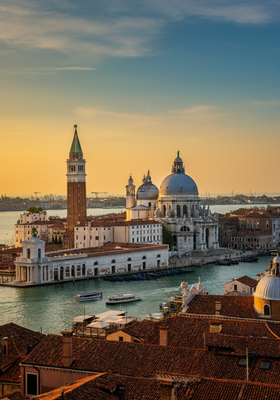
Venice’s Most Romantic Experiences: Gondola Tours & Intimate Venues
Planning Your Perfect Gondola Experience
- Book directly at official gondola stations (traghetti) for best rates
- Standard tours last 30 minutes and cost €80 during day, €100 after 7 PM
- Most romantic departure points: Bacino Orseolo behind St. Mark’s Square or Gondola Station Santa Maria del Giglio
- Consider sunset timing for the most enchanting atmosphere
Most Romantic Settings in Venice
Bridge of Sighs
Share a kiss under this iconic bridge at sunset for good fortune in love, according to local tradition.
Giardini Reali
These restored Royal Gardens offer intimate moments away from crowds, with stunning lagoon views.
Zattere Promenade
Take a twilight stroll along this waterfront path, perfect for watching the sun set over Giudecca.
For the most memorable experience, combine a sunset gondola ride with dinner at an intimate bacaro in Dorsoduro, followed by a moonlit walk through the quiet calli (streets) of Venice’s less-traveled neighborhoods.
Recommended time allocations: – Gondola ride: 30-40 minutes – Romantic dinner: 1.5-2 hours – Evening walk: 1 hour Best months for romantic visits: April-May or September-October when crowds are smaller and weather is pleasant.
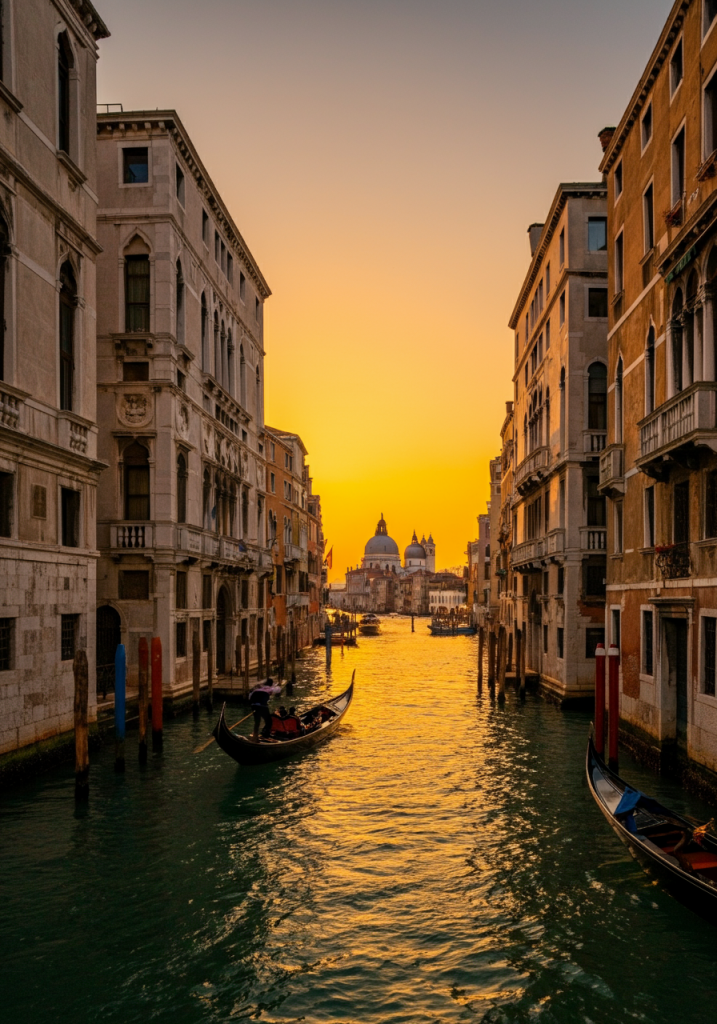
Venice’s Musical Calendar: A Year-Round Symphony of Events
For centuries, Venice has been a center of musical excellence, hosting world-class concerts in venues ranging from historic churches to grand theaters. Today, this tradition continues with a rich calendar of performances throughout the year, blending classical masterpieces with contemporary innovations.
Notable Annual Music Events
- Venice Music Festival (September-October) – Multiple venues across the city
- La Fenice Opera Season (November-July) – Teatro La Fenice, Campo San Fantin
- Vivaldi Church Concerts (Year-round) – Chiesa San Vidal, Campo Santo Stefano
- Venice Jazz Festival (July) – Various locations including Teatro La Fenice
Historical Significance
These musical traditions trace back to the 16th century when Venice emerged as Europe’s musical capital. The city’s unique architecture and acoustics have shaped its musical heritage, with many historic venues still serving as premier concert locations today. From the golden age of Vivaldi to contemporary performances, Venice continues to be a sanctuary for musical excellence.
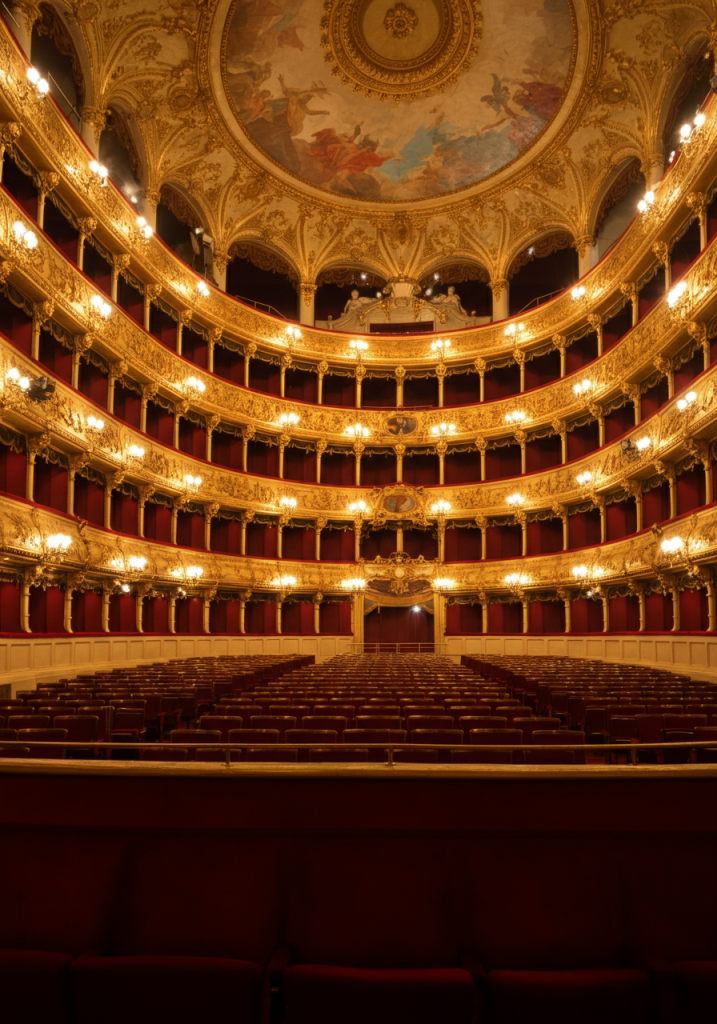
Venice’s Cultural Treasures: Essential Museums & Attractions
Art Museums
- Gallerie dell’Accademia: Home to the finest Venetian paintings from the 14th-18th centuries
- Peggy Guggenheim Collection: Premier modern art museum housed in an 18th-century palazzo
- Ca’ Pesaro: International Modern Art Gallery featuring works by Klimt, Rodin, and Chagall
Historical Museums
- Doge’s Palace (Palazzo Ducale): Gothic masterpiece showcasing Venetian political history
- Museo Correr: Central museum of Venetian history and civilization
- Naval Historical Museum: Extensive collection chronicling Venice’s maritime heritage
Specialty Museums
- Glass Museum (Museo del Vetro): Celebrating Murano’s legendary glassmaking tradition
- Lace Museum (Museo del Merletto): Showcasing Burano’s delicate lace-making heritage
- Ca’ Rezzonico: Museum of 18th-century Venice with period furnishings and art
Must-See Cultural Attractions
- St. Mark’s Basilica: Byzantine masterpiece with golden mosaics and precious treasures
- Scuola Grande di San Rocco: Featuring Tintoretto’s masterpiece cycle of paintings
- Teatro La Fenice: Historic opera house offering guided tours and performances
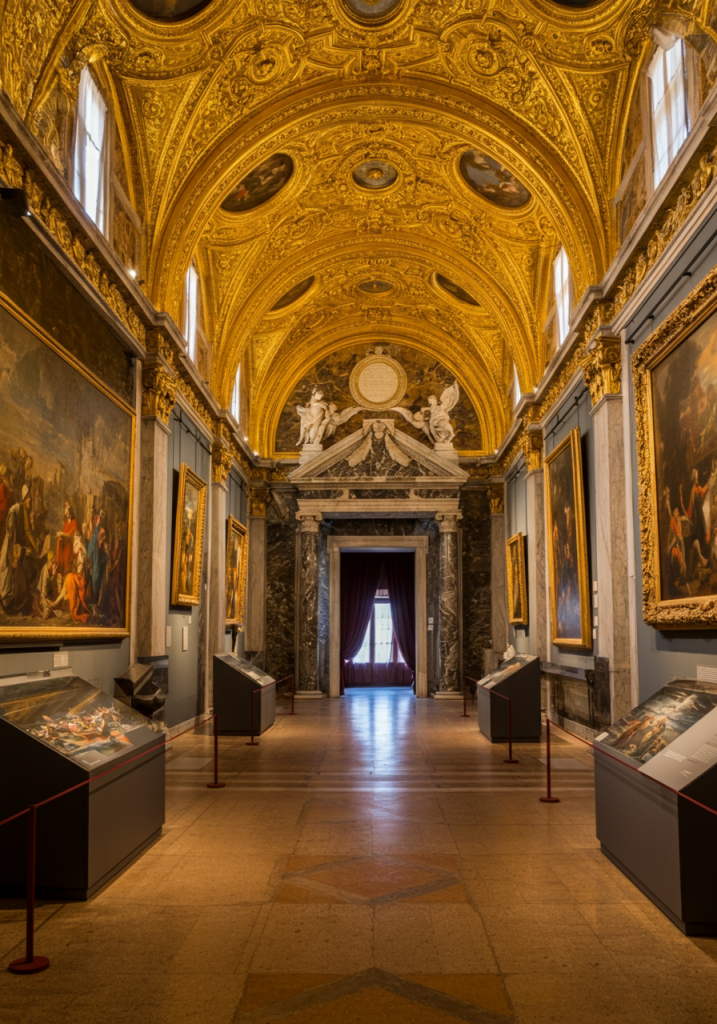
Venice Santa Lucia Station: Complete Visitor’s Guide
Train Companies & Routes
- Trenitalia: High-speed services to Rome, Florence, and Milan via Frecciarossa and Frecciargento trains
- Italo: Premium high-speed connections to major Italian cities
- Regional trains: Local services throughout the Veneto region
Operating Hours & Schedules
- Station building: Open daily from 6:00 AM to 11:00 PM
- Ticket offices: 6:30 AM to 8:30 PM (Monday-Sunday)
- High-speed trains: First departure at 5:20 AM, last arrival at 11:45 PM
Tourist Services & Facilities
- Tourist Information Point: Located in the main hall, open 8:00 AM – 7:00 PM
- Left luggage facilities: Available daily from 6:00 AM to 11:00 PM
- Water taxi and vaporetto (water bus) connections right outside the station
- Currency exchange, ATMs, and food outlets throughout the terminal
Located at the western end of the Grand Canal, Santa Lucia station serves as Venice’s gateway to mainland Italy and beyond. The station handles over 30 million passengers annually, offering connections to major European destinations including Paris, Vienna, and Munich through overnight services.
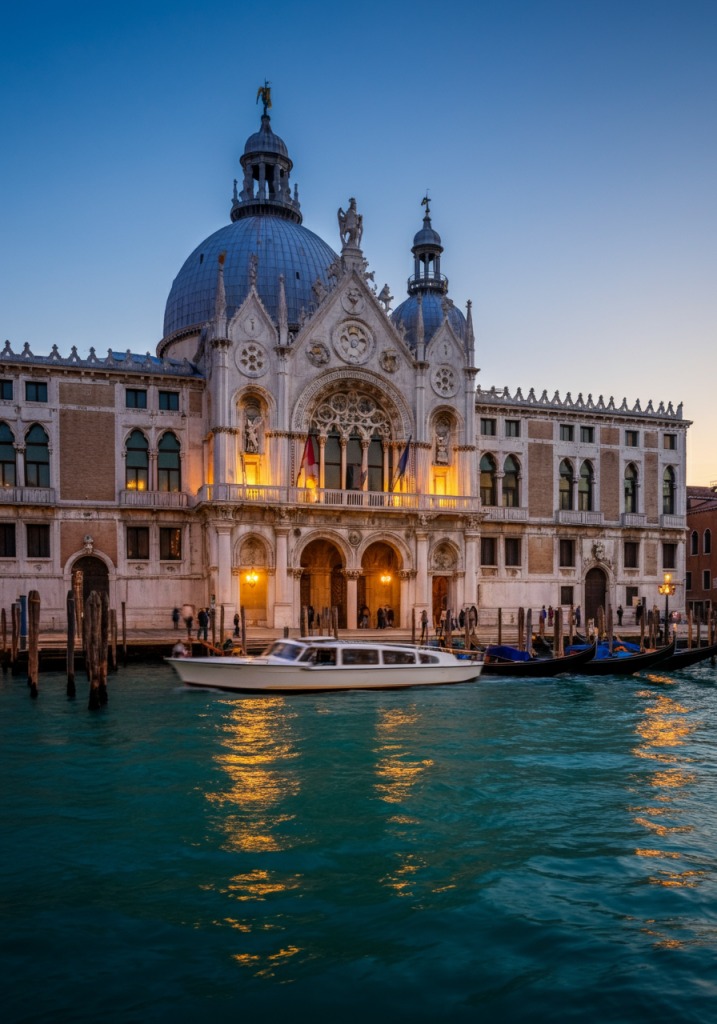
Venice’s Celebrity Haunts: Iconic Hotels & Restaurants
Throughout history, Venice has been a magnet for the world’s most illustrious celebrities, who have favored certain establishments for their luxury, discretion, and timeless elegance.
Legendary Hotels
- The Cipriani: Elizabeth Taylor’s preferred retreat, featuring private gardens and Olympic-sized pool
- Hotel Danieli: Favorite of stars like Angelina Jolie and Johnny Depp during the Venice Film Festival
- Gritti Palace: Where Ernest Hemingway wrote and where modern celebrities like George Clooney often stay
Star-Studded Restaurants
- Harry’s Bar: Historic haunt of Charlie Chaplin and Woody Allen, famous for its Bellini cocktails
- Do Forni: Traditional favorite of Robert De Niro and Steven Spielberg during festival season
- Antiche Carampane: Hidden gem frequented by Sophia Loren and contemporary Italian celebrities
These establishments continue to attract today’s global elite, especially during major events like the Venice Film Festival and the Biennale, maintaining Venice’s status as a celebrity paradise.
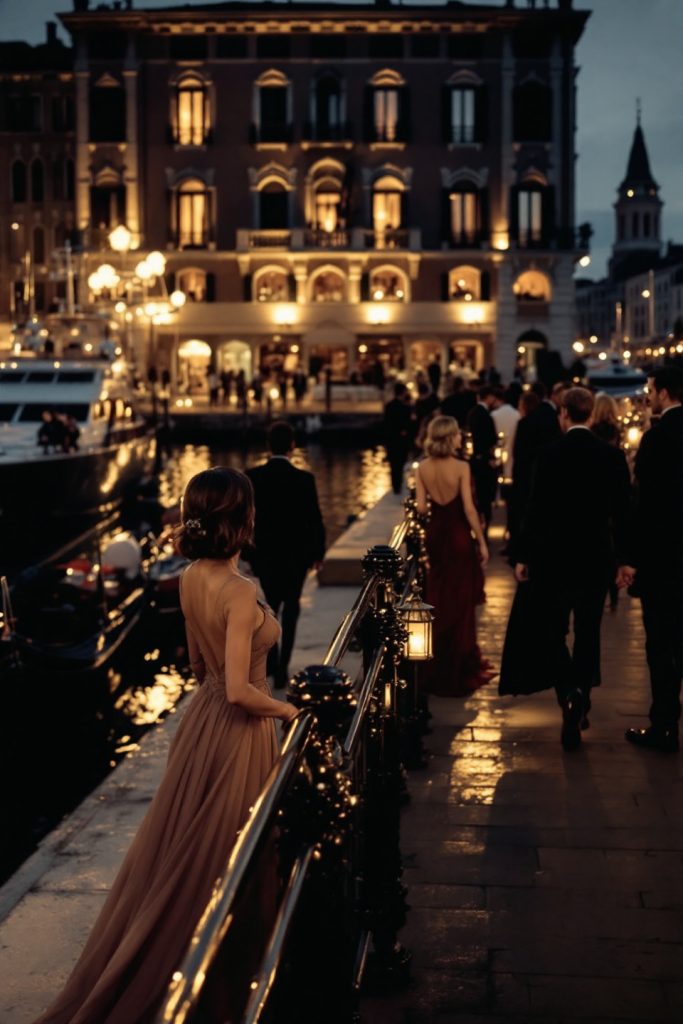
Venice’s Rich Culinary Heritage: A Journey Through Time
For centuries, Venice’s unique position as a maritime trading power has shaped its distinctive culinary traditions, creating a food culture unlike anywhere else in Italy. The city’s lagoon location and historic trade routes have contributed to a remarkable fusion of flavors, combining local seafood with exotic spices from distant lands.
Traditional Venetian cuisine revolves around the fresh catches from the Adriatic Sea, with iconic dishes like baccalà mantecato (creamed dried cod) and risotto al nero di seppia (squid ink risotto) reflecting the city’s deep connection to the water. The famous cicchetti – Venice’s answer to tapas – showcase how the city’s merchants historically transformed simple ingredients into sophisticated bite-sized delicacies.
Beyond the seafood, Venice’s sweet traditions tell their own story, with treats like baicoli (thin, crisp cookies) and bussolai (butter cookies) originally created to sustain sailors on long voyages. These culinary traditions, passed down through generations of Venetian families, continue to thrive in the city’s bacari (wine bars), restaurants, and home kitchens, preserving the authentic taste of Venice’s remarkable history.
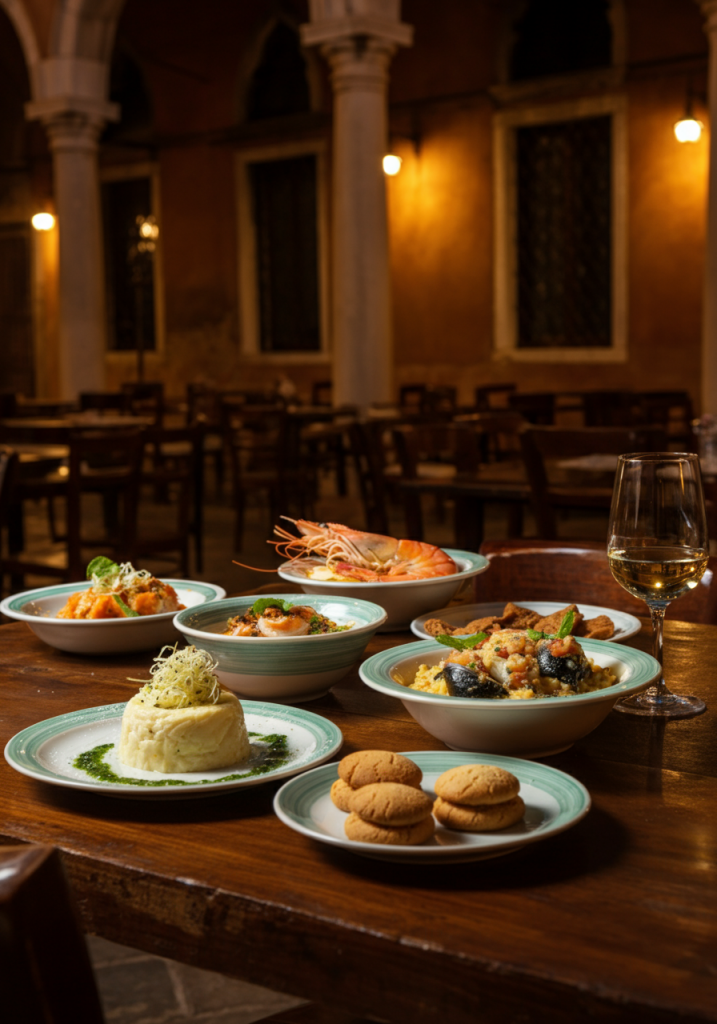
What Is Venice Famous For?
Venice is renowned worldwide for its extraordinary architectural beauty and unique urban landscape built entirely on water. This magnificent Italian city stands as a testament to human ingenuity, with its intricate network of canals, historic palazzos, and stunning maritime architecture.
Famous for its romantic gondola rides, breathtaking bridges like the Rialto, and iconic landmarks such as St. Mark’s Basilica, Venice offers an unparalleled cultural and historical experience. The city’s extraordinary preservation of medieval and Renaissance architecture makes it a UNESCO World Heritage site and a living museum.
Beyond its visual splendor, Venice is celebrated for its rich artistic heritage, maritime history, and significant contributions to trade, music, and art throughout European history.
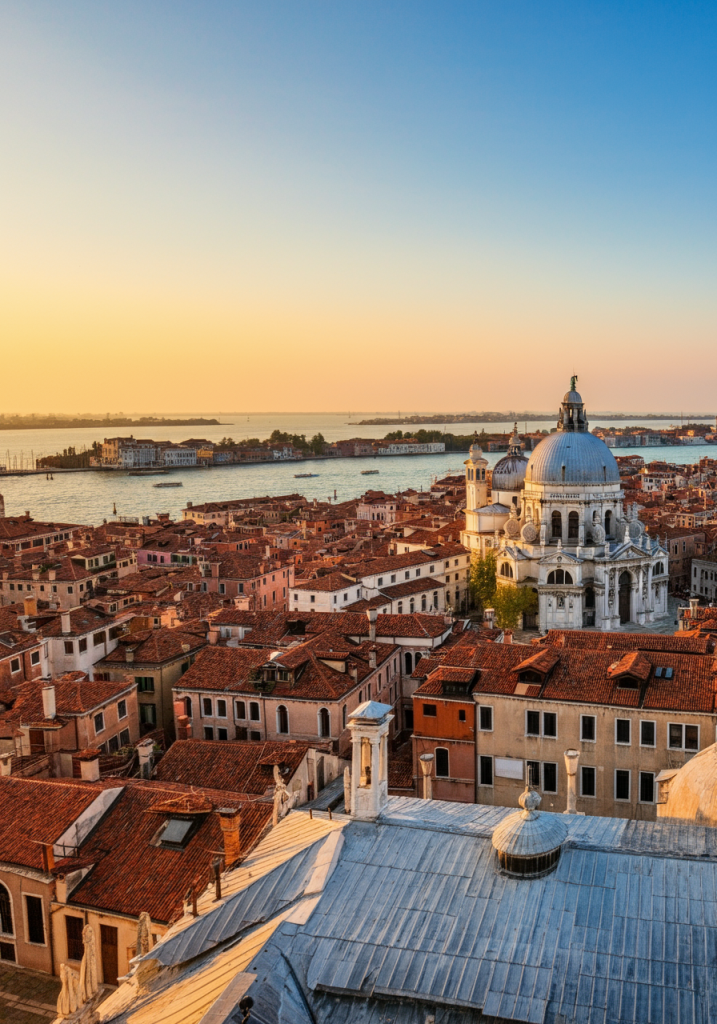
THE ANCIENT CULTURE OF MAGIC IN VENICE
Venice, a city of mystical allure, harbored a rich and complex magical tradition that flourished beneath its ornate Renaissance facades. During the medieval and early modern periods, the city was a crossroads of cultural and esoteric knowledge, where mystical practices intertwined with maritime trade and scholarly pursuits.
Venetian magic was not merely superstition, but a sophisticated blend of folk wisdom, alchemical knowledge, and spiritual practices. Scholars and mystics in the city studied hermetic texts, practiced astrological divination, and explored the boundaries between scientific inquiry and magical understanding.
From the Jewish Ghetto’s mystical Kabbalah traditions to the secret societies that met in the city’s labyrinthine streets, Venice was a crucible of magical thought. Occult practitioners, ranging from respected philosophers to local healers, contributed to a unique magical ecosystem that made the city a beacon of esoteric knowledge in Europe.
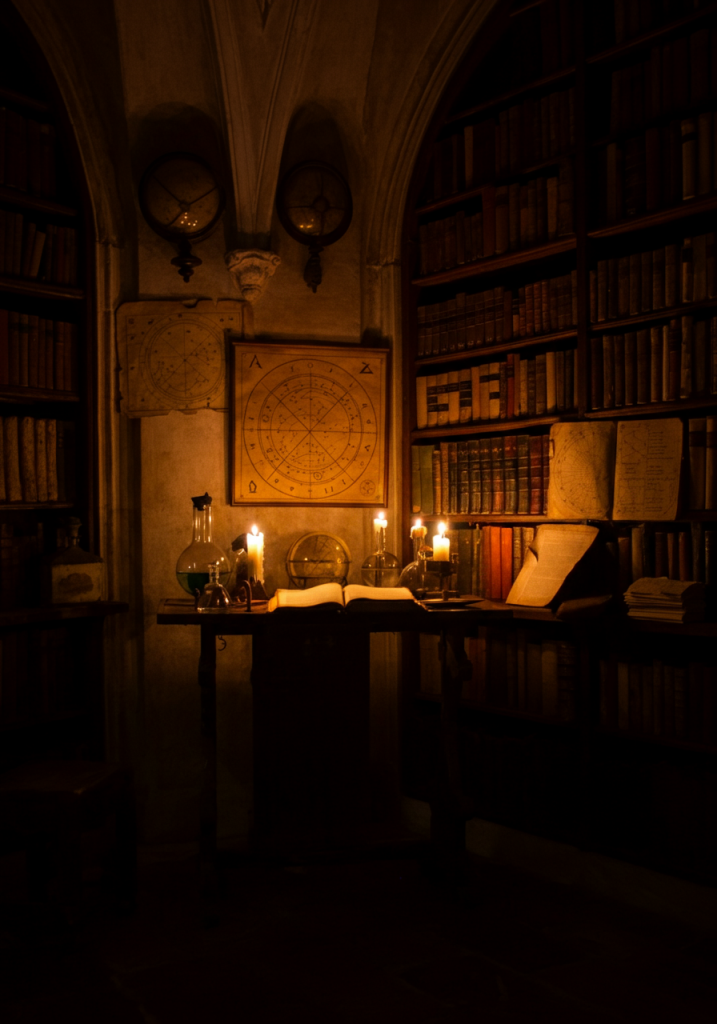
CARNAVAL OF VENICE
The Venice Carnival, or Carnevale di Venezia, is a centuries-old tradition that transforms the city into a mesmerizing spectacle of elaborate masks, stunning costumes, and vibrant celebrations. Dating back to the Renaissance period, this annual festival has been a cornerstone of Venetian culture since the 12th century.
Each year, typically in February, the city comes alive with participants donning intricate masks and period costumes that recall the city’s rich artistic heritage. These masks, known as maschere, are not mere decorations but complex cultural symbols representing different social classes, professions, and mythical characters.
The Carnival reaches its peak with grand masquerade balls, street performances, and a spectacular parade along the canals. Visitors from around the world gather to witness this unique celebration that blends historical tradition, artistic expression, and pure festive joy.
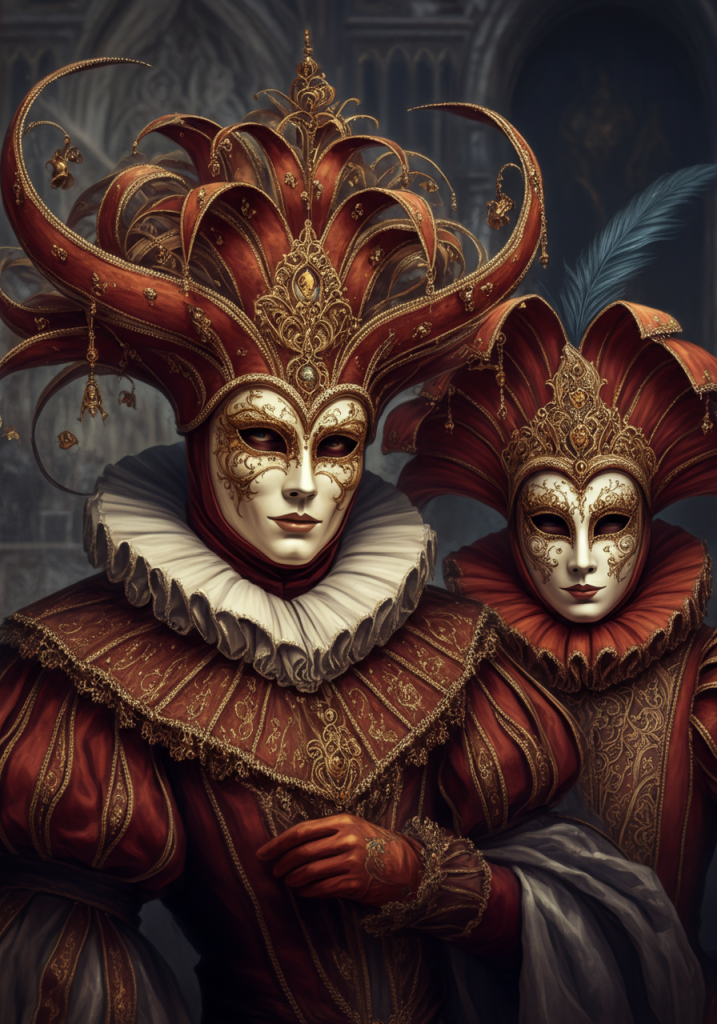
FAMOUS MOVIES FILMED IN VENICE
Venice’s ethereal beauty and serpentine canals have mesmerized filmmakers for generations, transforming the city into a living, breathing cinematic canvas. More than mere scenery, Venice offers filmmakers a character so compelling that it often becomes the emotional heart of the narrative.
Legendary directors have long been enchanted by the city’s visual poetry. Visconti’s “Death in Venice” explored the city’s melancholic grandeur, while David Lean’s “Summertime” painted a romantic portrait of its timeless allure. More recently, dynamic films like Martin Scorsese’s “Casino Royale” and The Tourist starring Angelina Jolie and Johnny Depp have continued to showcase Venice’s magnetic screen presence.
With its labyrinthine streets, luminous waterways, and architectural splendor, Venice remains an unparalleled backdrop that whispers stories of romance, mystery, and profound human emotion.
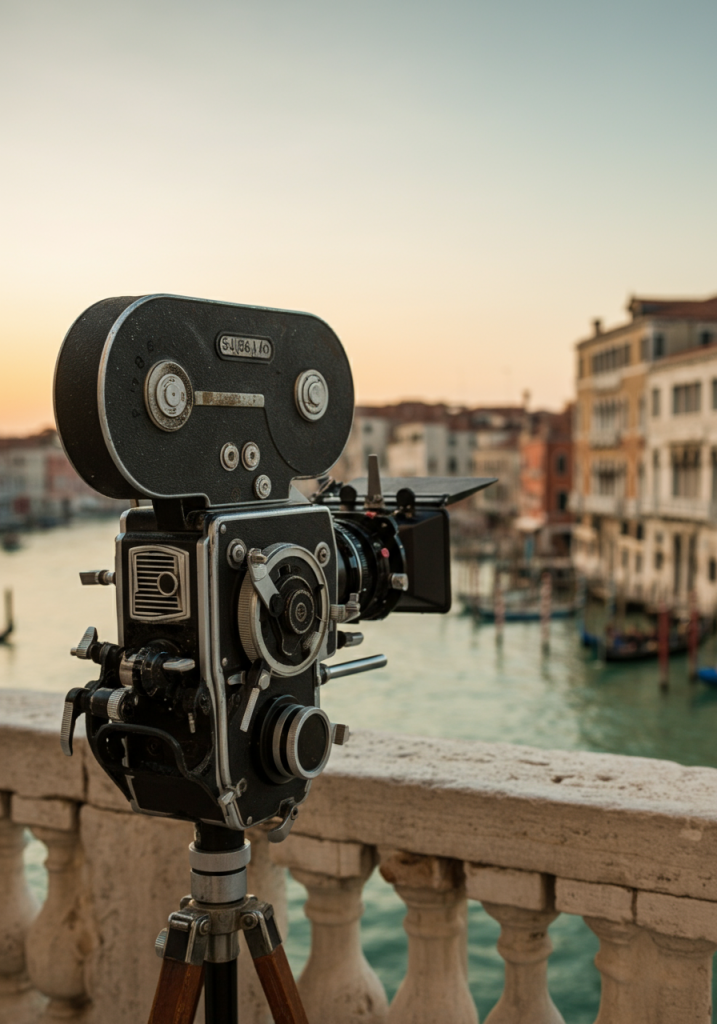
VENETIAN LIFESTYLE
Venice is not just a city, but a way of life—a delicate dance between historical preservation and modern adaptation. Venetians navigate their unique urban landscape with a grace born of generations, where boats replace cars and narrow walkways are the primary thoroughfares of daily existence.
The rhythm of Venetian life is intimately connected to water and tide. Residents wake early to shop at local markets, traversing canals by foot and boat, greeting neighbors and maintaining tight-knit community bonds that have sustained the city for centuries. Their lifestyle emphasizes quality over quantity, with small apartments, locally sourced food, and a deep respect for architectural and cultural heritage.
Social interactions in Venice are characterized by a blend of old-world formality and warm familiarity. Locals gather in bacari (traditional wine bars) for cicchetti (small appetizers), engaging in lively conversations and maintaining social traditions that have defined Venetian culture for generations. Despite challenges like flooding and tourism, Venetians remain fiercely proud of their distinctive urban identity.
